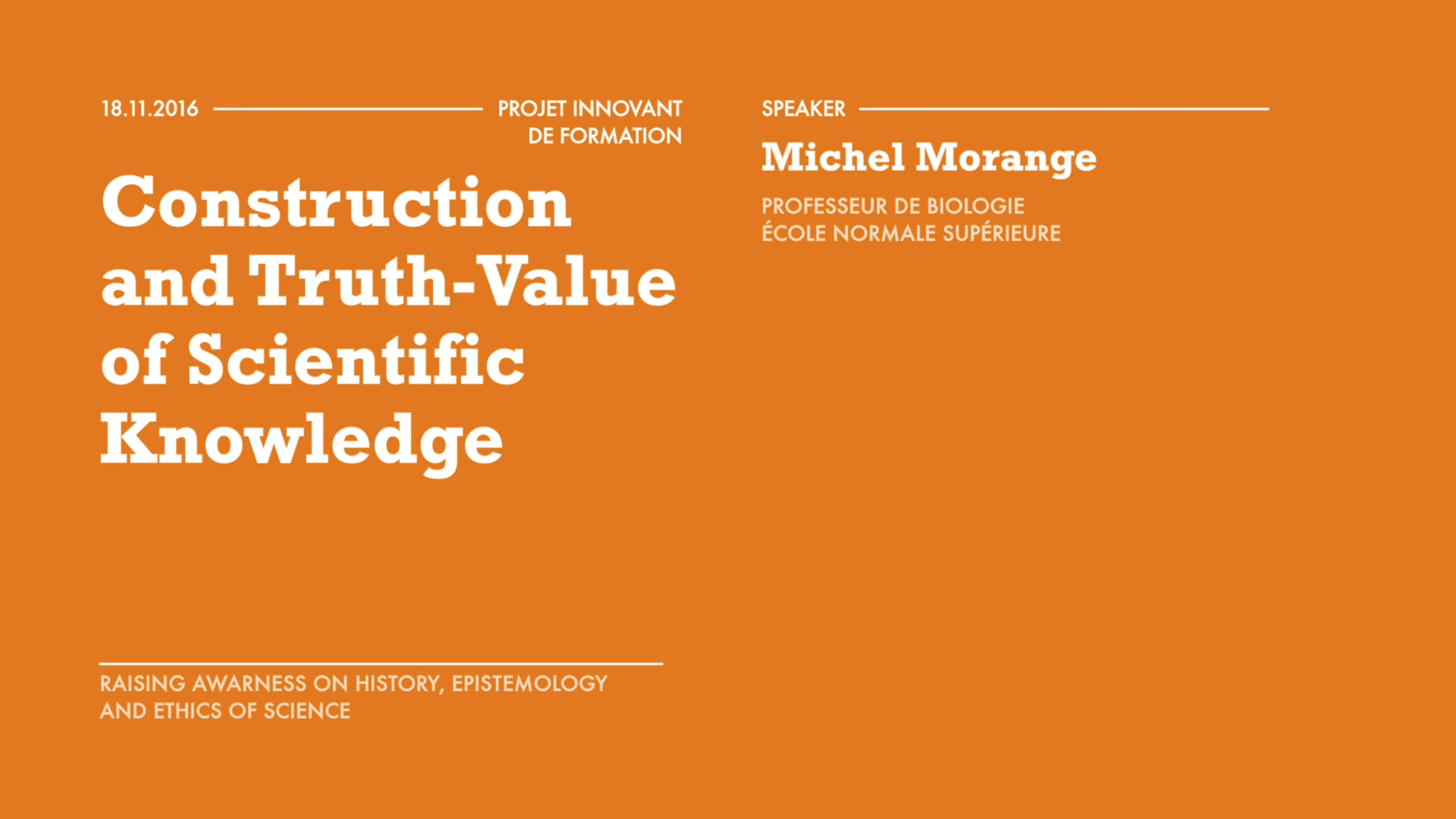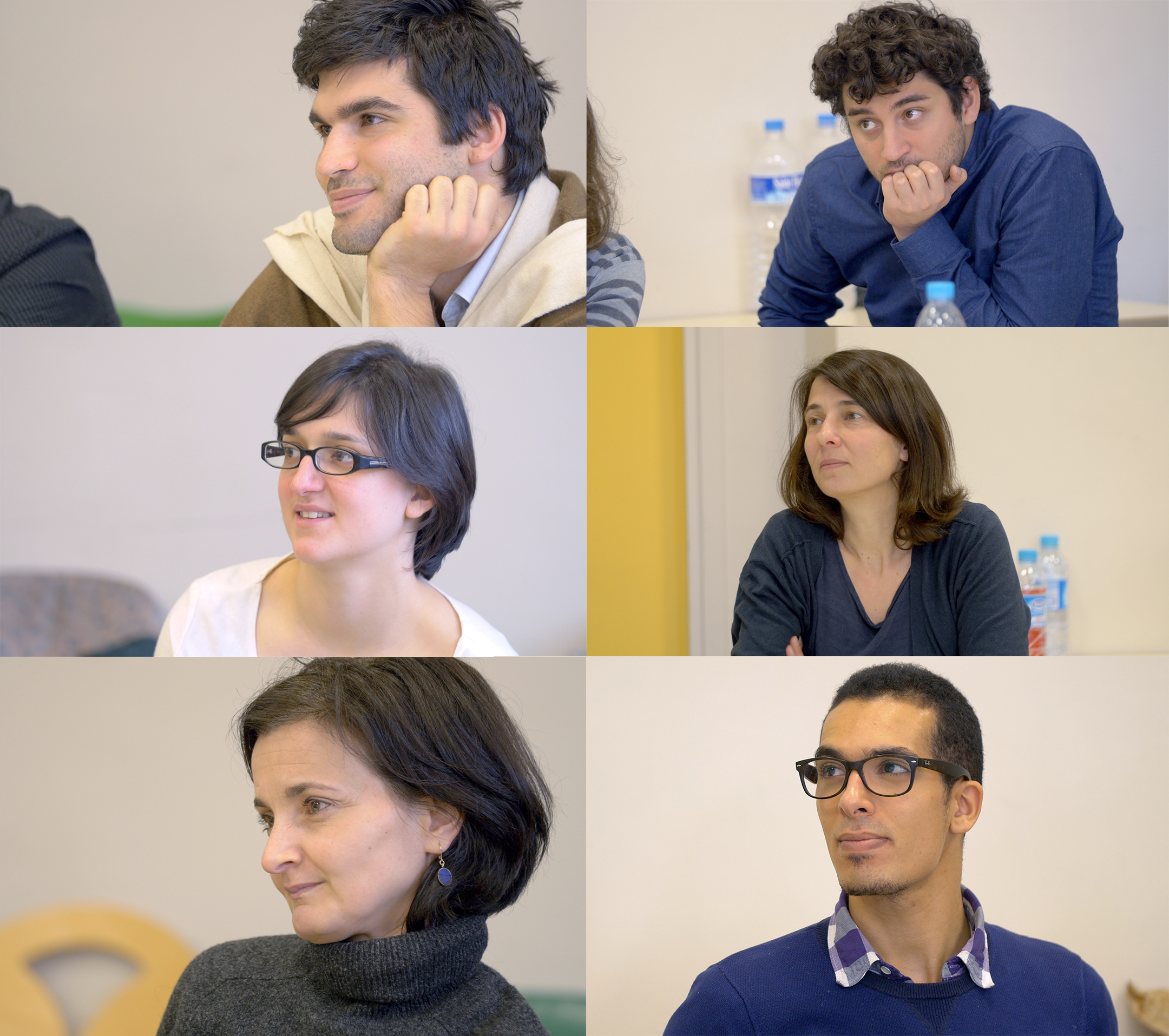2021
2020
📥 Télécharger en HD
📄 Description de la vidéo
🏷 TITRE
Philosophy "In" Science : How Philosophers Can Infiltrate Science, With An Example From Immunology by Thomas Pradeu
📝 ABSTRACT
How can philosophy help science? In the introduction to his lecture, Pradeu insists on the relevance of associating philosophy and science, especially philosophy and immunology. He then explains his personal approach to philosophy in science by showing a study on bibliometrics and reporting on an analysis of pins. Following a presentation of the ImmunoConcEpT laboratory and its team, Pradeu summarizes his thinking about immunology and individuality. According to Pradeu’s discontinuity theory, organisms are microbial communities, which means that individuals are not homogeneous, but heterogeneous. Pradeu concludes his lecture by presenting two therapeutic consequences of his theory: the shifting view on immune response in cancer and the development of an “ecosystemic” medicine.
📖 SUMMARY
00:00:10 – Introduction
00:00:45 – A. Pradeu’s personal experience of philosophy and science
00:01:30 – B. Main points of Pradeu’s talk
00:04:35 – C. Relevance of a philosophy of immunology
00:08:00 – D. Theories and principles
00:10:00 – E. Overview of Pradeu’s talk
00:10:42 – 1. Pradeu’s approach of philosophy in science
00:10:53 – 1.1. What is philosophy in science?
00:12:30 – 1.2. A study on bibliometrics
00:16:25 – 1.3. An analysis of pins: a mix of philosophy and science
00:22:49 – 1.4. Pradeu’s work within the ImmunoConcEpT laboratory
00:30:10 – 2. Immunology and individuality
00:30:15 – 2.1. Biological individuality: Unity and persistence
00:35:37 – 2.2. The birth of immunology
00:38:00 – 2.3. The self-nonself dichotomy
00:45:40 – 2.4. Organisms as microbial communities
00:51:25 – 2.5. Heterogeneous individuality
00:51:38 – 2.6. Immunology: The double extension of immunity
00:54:56 – 3. Triggering an immune response
00:55:05 – 3.1. Pradeu’s discontinuity theory
00:57:05 – 3.2. A mathematical model and a unifying framework
00:59:12 – 4. Therapeutic consequences of Pradeu’s theory
00:59:17 – 4.1. Consequence 1: Immune response in cancer
01:00:20 – 4.2. Consequence 2: Toward an “ecosystemic” medicine?
01:02:32 – Conclusion
01:02:35 – A. Summary of Pradeu’s argumentation
#️⃣ Mots clés : philosophy, different, better, gottfried wilhelm Leibniz, rene Descartes, biology, interdisciplinarity, transdisciplinarity, ubiquity, links, philosophy of biology, philosophy of medicine, experimental, medical, conceptual, broader, more diverse system, methodology, on science, uqàm in montréal, measure the impact, karl popper, publish, cited, being recognized as important, juxtapose, nature: https://www.nature.com
📸Miniature YouTube
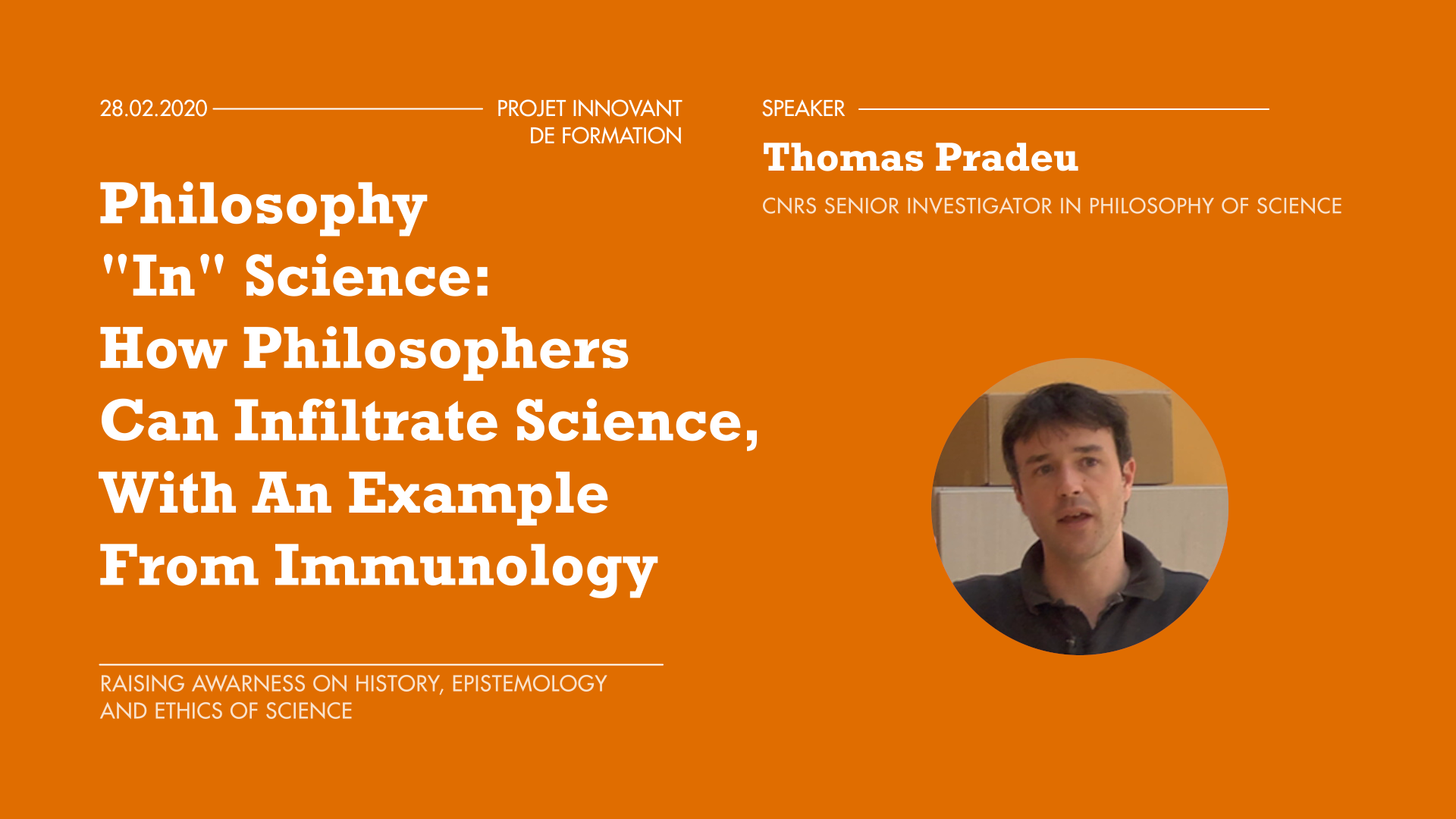
📥 Télécharger en HD
📄 Description de la vidéo
🏷 TITRE
A medicine doctor working in philosophy by Ana Soto
📝 ABSTRACT
How does theory impact scientific research? In order to address this question, Ana Soto explains different ways in which her knowledge of philosophy nourishes her experimental work in biology. She especially insists on the need of theory to choose observables. After presenting the ORGANISM Group and its research, Soto discusses her theory of organisms and its three main principles: default state, variation and organization. To provide examples to her audience, she focusses on her experiments on organogenesis and on carcinogenesis. She ends her talk by sharing the conclusions of these experiments.
📖 SUMMARY
00:00:10 – Introduction
00:02:32 – A. Outline of Soto’s talk
00:03:57 – 1. Soto’s experimental work
00:04:47 – 1.1. Experiment with estrogen target cells
00:09:40 – 1.2. Philosophical thoughts on the experiment
00:15:01 – 1.3. The ORGANISM Group and its research
00:16:40 – 2. The role of theory in research
00:16:41 – 2.1. The need of theory to choose observables
00:17:58 – 2.2. Theoretical transition from physics to biology
00:20:35 – 2.3. Default state in mechanics
00:21:47 – 3. Soto’s theory of organisms
00:22:00 – 3.1. Principles for Soto’s theory of organisms
00:22:10 – 3.1.1. Default state
00:26:40 – 3.1.2. Variation
00:31:50 – 3.1.3. Organization
00:35:21 – 4. Organogenesis
00:37:06 – 4.1. Experiment on morphogenesis
00:42:05 – 4.2. Theoretical conclusions of the experiment
00:43:20 – 5. Carcinogenesis
00:43:25 – 5.1. Definition of neoplasm
00:49:34 – 5.2. Kidney organogenesis
00:53:35 – 5.3. The role of mutations in carcinogenesis
00:55:50 – 5.4. Cancer as altered tissue organization
01:02:50 – 5.5. Conclusions of the experiment
01:03:11 – Conclusion
#️⃣ Mots clés : endocrine disruptors, physician, biology, molecular biology revolution, paradox, write a book, trespassing into philosophy, coding, albert einstein, theory of organisms, blaise pascal chairs, the choice of observables, limit case, stephen jay gould, friedrich nietzsche, giuseppe longo, make mistakes, principle,
📸Miniature YouTube
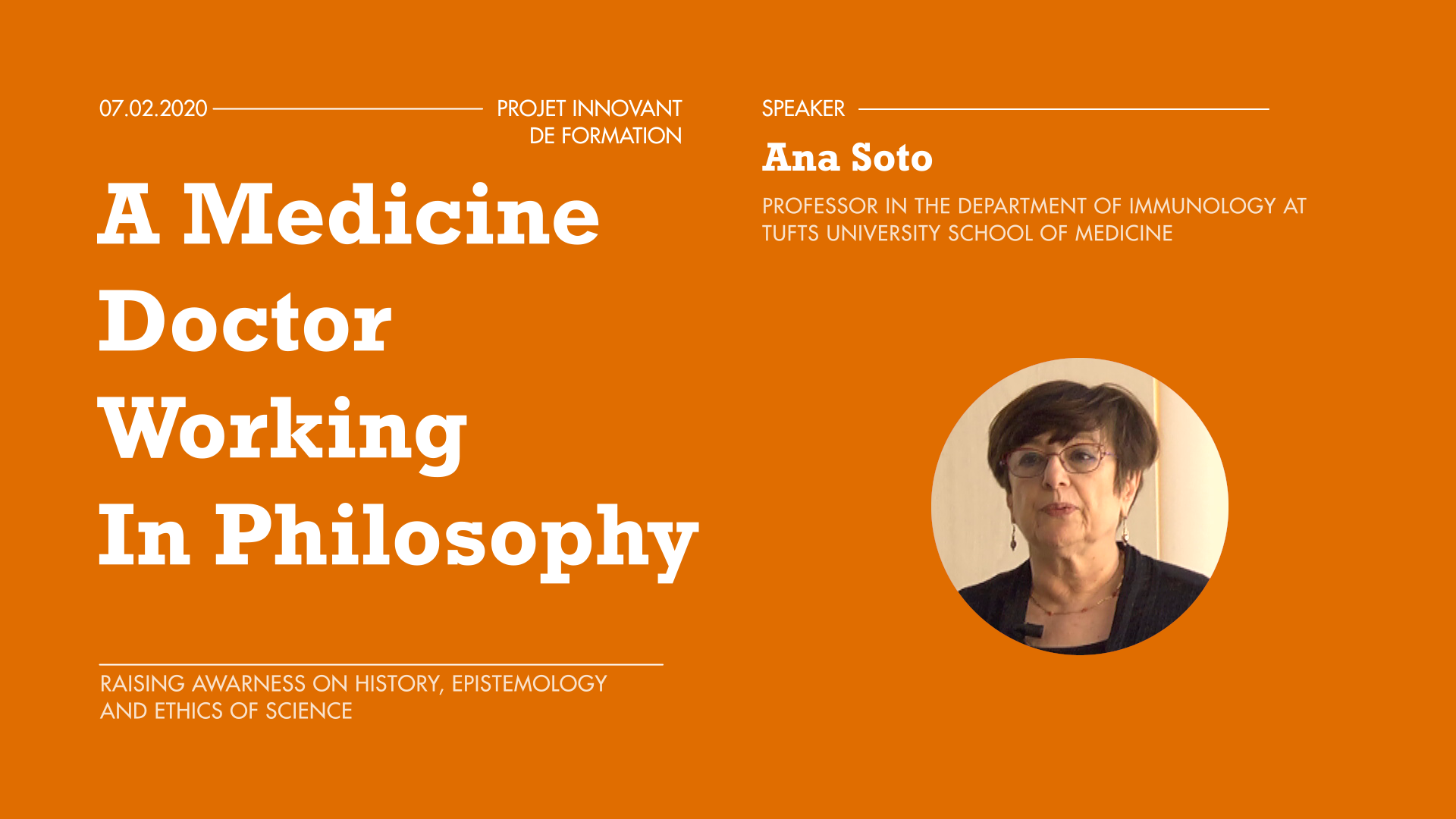
📥 Télécharger en HD
📄 Description de la vidéo
🏷 TITRE
The Ethics of Ethics of AI by Jean-Gabriel Ganascia
📝 ABSTRACT
Can ethical committees enact sets of norms to prevent the unethical use of AI technologies? Jean-Gabriel Ganascia starts his lecture on ethics and AI by recalling the origins of the scientific discipline as well as the different definitions of the term "artificial intelligence". He then provides examples of the unethical use of AI in different situation, for instance with autonomous cars or intelligent agents. Through descriptions of ethical dilemmas that may occur when implementing AI technologies, Ganascia characterizes the specifics of ethics in the digital era. He concludes his lecture by mentioning a scientific paper he wrote with Thomas Powers about the ethics of ethics of AI. According to him, the risk of having unethical AI does not come from the technology itself that would take its autonomy, but from the men behind the technology.
📖 SUMMARY
00:00:10 – Introduction
00:01:00 – A. Overview of the lecture
00:04:45 – B. The origins of AI
00:08:27 – C. The definitions of AI
00:11:55 – 1. AI and ethics
00:12:03 – 1.1. Unethical autonomous agents
00:16:12 – 2. Computational ethics
00:16:20 – 2.1. The example of autonomous cars
00:21:04 – 2.2. The example of an Uber accident
00:28:14 – 2.3. The example of LAWS
00:33:45 – 2.3.1. Autonomy
00:40:50 – 2.3.2. Prudence
00:42:40 – 2.3.3. Sagacity
00:42:54 – 2.3.4. Deliberation
00:47:05 – 3. Conceptual clarification
00:47:10 – 3.1. Autonomous agent
00:49:08 – 3.2. Artificial intelligence
00:49:45 – 3.3. Bias
00:50:48 – 4. Ethics in the digital era
00:51:30 – 4.1. “Reontologization” of the human society
00:56:00 – 4.2. Ethical committees
01:01:30 – 5. The ethics of ethics of AI
01:02:00 – 5.1. Oppositional versus systemic
01:04:10 – 5.2. Epistemological thinking
01:06:30 – 5.3. European general data protection regulation
01:11:55 – 5.4. Epistemology of Big Data
01:13:12 – 5.5. Underestimating and overestimating risks
01:23:45 – Conclusion
#️⃣ Mots clés : model, norms, fundamental rights, Thomas Powers, 1956, scientific discipline, conjectures, technology, consequences, frightening
📸Miniature YouTube
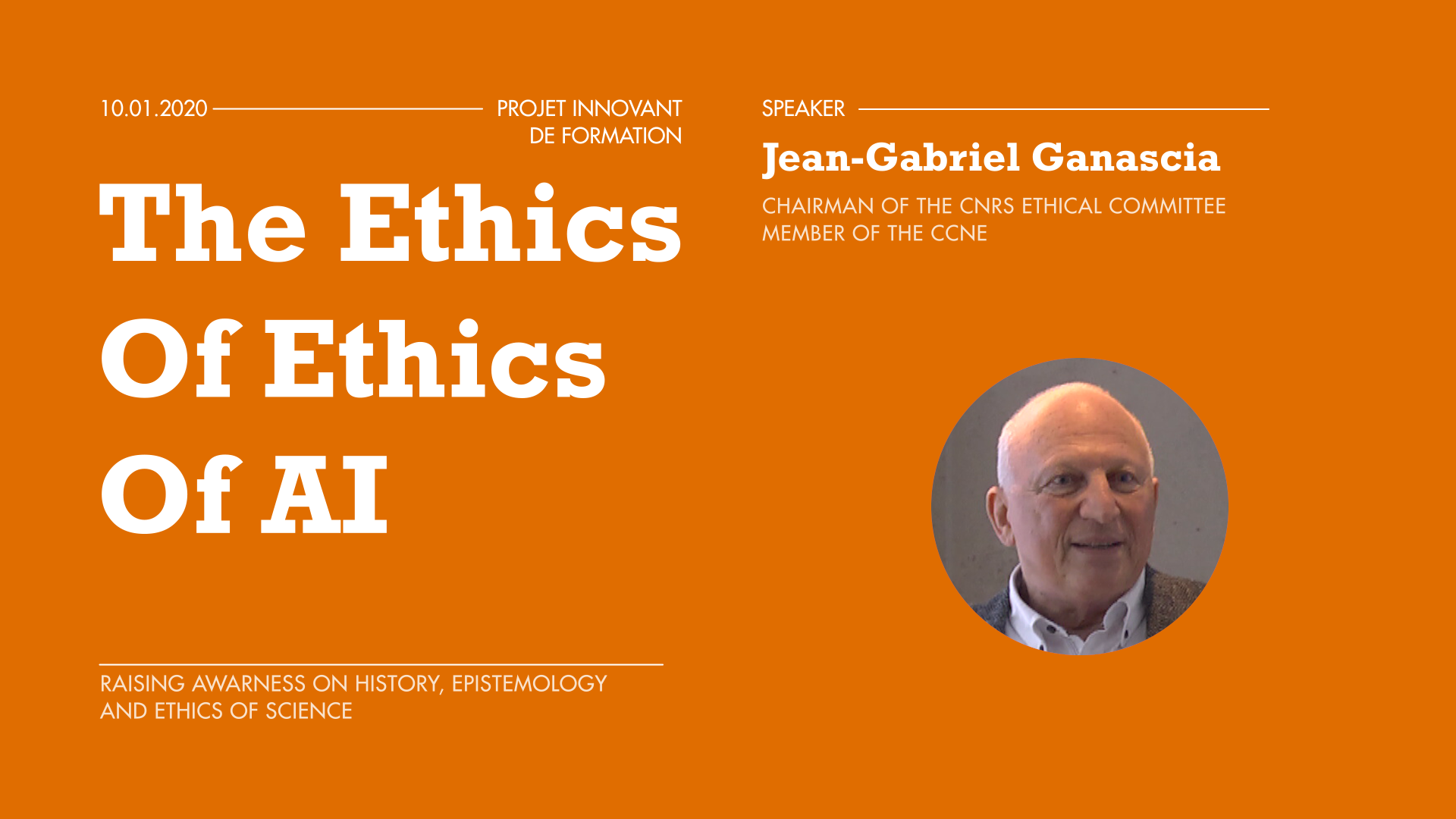
2019
📥 Télécharger en HD
📄 Description de la vidéo
🏷 TITRE
How are Scientific Forgeries Possible? by Claudine Cohen
📝 ABSTRACT
Are forgers in science betrayers of truth, or do they show how science is built? Following a brief definition of forgery, Claudine Cohen emphasizes the questions and goals she addresses in her lecture. She first approaches forgery through the lens of ethics and questions the efficiency of moralizing scientific research. She then recalls that scientific knowledge is a construction of facts, just like forgery is. She does however insist on the intentional aspect of forgery to produce false evidence and conclusions. Cohen ultimately analyses the processes and methods of historical sciences, such as archeology and paleontology, and gives examples of two famous archeological forgeries: the forgery of Moulin Quignon and the forgery of the Piltdown man.
📖 SUMMARY
00:00:10 – Introduction
00:02:24 – 1. Definition of forgery
00:02:49 – 1.1. Reasons for forgery
00:03:44 – 1.2. Nature of forgery
00:04:19 – 2. Challenges of forgery
00:04:55 – 2.1. Questions of the lecture
00:05:29 – 2.2. Goals of the lecture
00:06:09 – 3. Forgery and ethics
00:06:34 – 3.1. Forgers as betrayers of truth
00:11:09 – 3.2. Efficiency of the moralization of science?
00:13:14 – 4. Forgery and the construction of scientific knowledge
00:13:29 – 4.1. Frequency of forgery
00:15:09 – 4.2. Science as a human construction
00:19:44 – 4.3. The historical development of science
00:22:14 – 5. Forgery and the historicity of evidence
00:22:19 – 5.1. The contingency of historical sciences
00:25:19 – 5.2. Solutions for historical sciences’ evidence
00:26:04 – 5.3. Examples of archeological forgeries
00:29:39 – 5.3.1. The forgery of Moulin Quignon
00:43:19 – 5.3.2. The forgery of the Piltdown man
00:58:02 – Conclusion
#️⃣ Mots clés : paris sciences lettres, psl, ethics, PhD, science, epistemology, research, forgery, piltdown, moulin quignon,
📸 Miniature YouTube
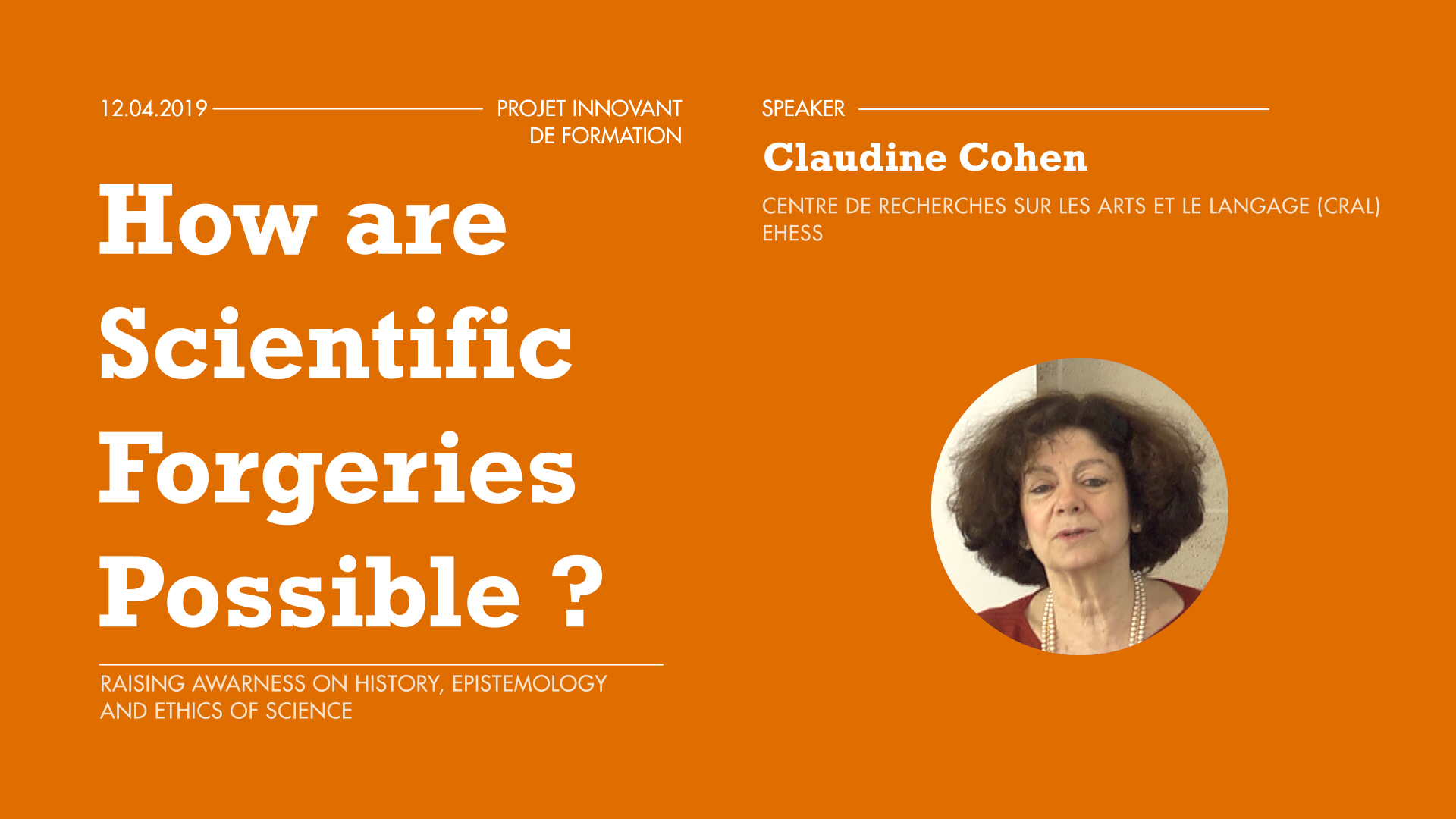
📥 Télécharger en HD
📄 Description de la vidéo
🏷 TITRE
Esprits Curieux by Chunlong Chen & Elina Zueva
📝 ABSTRACT
How to explain science to young children? By publishing books for two-to-six-year-old kids on scientific topics, the Actine Association, created by Olga Markova, aims to make science approachable to anyone. The project is called Esprits Curieux. The association is also involved in facilitating workshops for children and curating exhibitions for the general public on biological processes. During their lecture, Chunlong Chen and Elina Zueva share the stage to present the two books they each have written. Chen’s book is about the role of platelets in the blood while Zueva’s book tells the story of the relationship between the genome and transposons. They comment on their approach to storytelling for children by explaining their choice of topic, telling their story and showing the illustrations of each book.
📖 SUMMARY
00:00:10 – Introduction
00:01:00 –1. Esprits Curieux
00:01:03 –1.1. Historical background of the project
00:03:00 –1.2. Creating scientific books for children
00:04:15 –1.3. Publishing scientific books for children
00:05:30 – 2. The Actine Association
00:05:40 – 2.1. Creating the Actine Association
00:06:25 – 2.2. Workshops for kids
00:07:10 – 2.3. Exhibitions for the general public
00:08:15 – 2.4. Publishing new books for children
00:08:35 – 3. The Super Platelets
00:08:40 – 3.1. Presentation of the story
00:12:50 – 3.2. Blood explained to children
00:14:06 – 3.3. Acknowledgements
00:15:55 – 4. Genome and Transposons
00:17:20 – 4.1. Ways to simplify scientific concepts
00:18:50 – 4.2. Presentation of the story
00:19:50 – 4.3. Genome and transposons explained to children
00:29:10 – 4.4. Working with the editor
00:29:48 – Conclusion
#️⃣ Mots clés : paris sciences lettres, psl, ethics, PhD, science, epistemology, research, scientific book, kids, children,
📸 Miniature YouTube
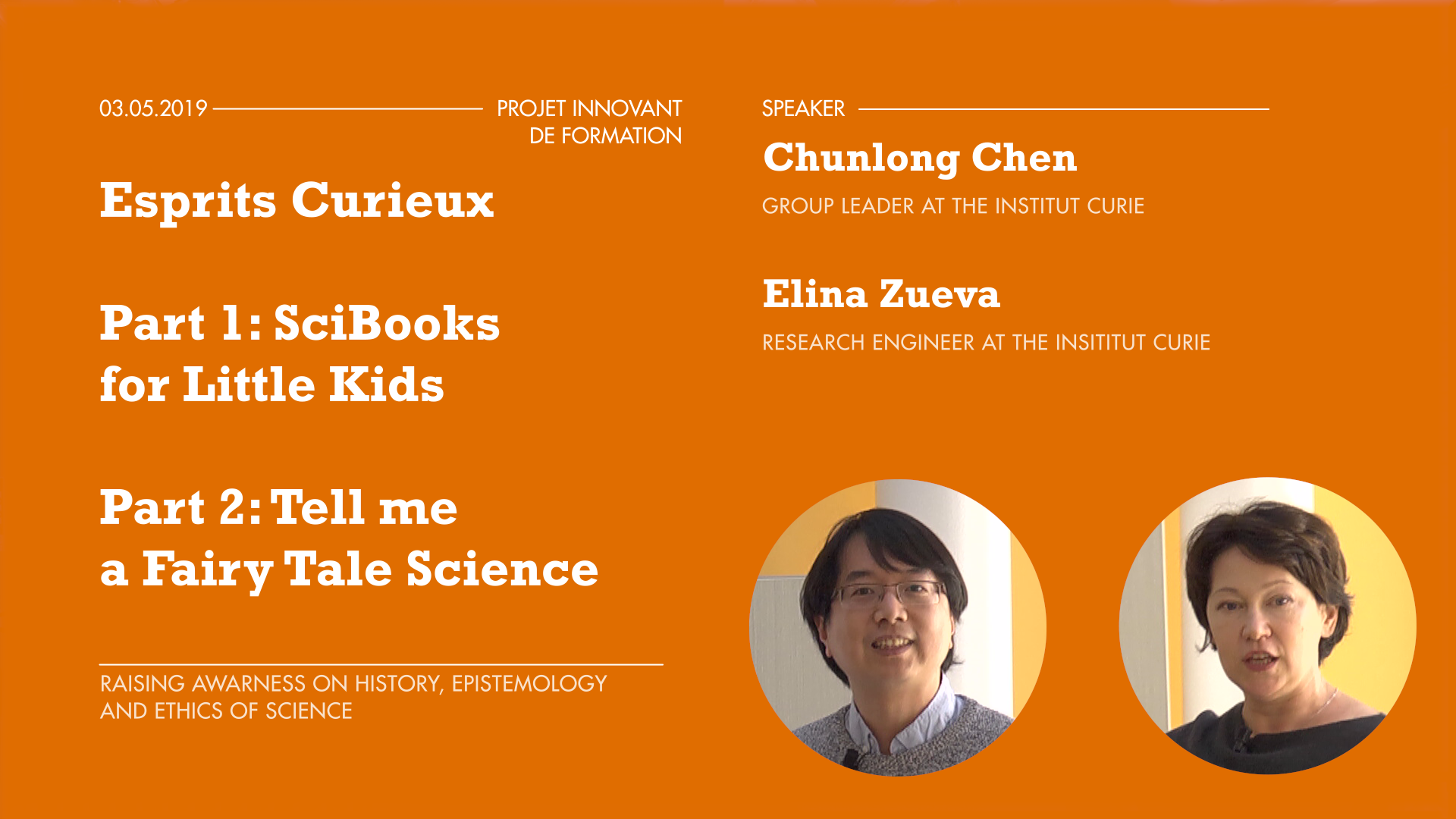
📥 Télécharger en HD
📄 Description de la vidéo
🏷 TITRE
AI, Affective Robots and Ethics by Laurence Devillers
📝 ABSTRACT
Is artificial intelligence (AI) developed according to ethical principles? After presenting herself as well as her research center, Laurence Devillers defines AI and explains how it works. She also presents the risks of the lack of women in the AI industry. She then gives a brief summary of AI historical development while focusing on the specificities of contemporary AI. To show the current limits of AI, Devillers enumerates the differences between machine intelligence and human intelligence. She insists on the fact that the ability for electronic systems to fake emotions can deceive vulnerable people. She then lists a series of ethical principles that should be respected by AI industry leaders. As a conclusion to her lecture, Devillers claims that there are no ethical machines. Ethics should come from the community of researchers and industries by building common AI tools.
📖 SUMMARY
00:00:00 – Introduction
00:00:10 – 1. Contextualization
00:00:10 – 1.1. Presentation of Laurence Devillers
00:09:42 – 1.2. Presentation of LIMSI-CNRS
00:10:06 – 1.3. Presentation of DATAIA Institute
00:14:42 – 2. Trustable AI
00:14:42 – 2.1. Definition of a trustable AI
00:16:12 – 2.2. Building a trustable AI
00:17:33 – 3. Women in AI
00:17:36 – 3.1. Statistics and issues
00:19:18 – 4. AI and robotics
00:20:48 – 4.1. A brief history of AI
00:23:16 – 4.2. Moral and technical consequences of automation
00:23:35 – 4.3. Contemporary AI
00:32:25 – 5. Machine vs. human intelligence
00:33:02 – 5.1. Machine vs. human perception
00:35:55 – 5.2. A narrow AI
00:38:00 – 5.3. New frontiers for AI
00:39:32 – 6. Human-machine co-evolution: issues and recommendations
00:40:26 – 6.1. Chatbot and AI
00:43:0 – 6.2. Emotions in social interaction
00:54:55 – 7. Ethical principles and industry leaders
00:55:00 – 7.1. Anthropomorphism
00:58:20 – 7.2. Bio-mimicry
01:00:10 – 7.3. Adaptive learning
01:01:33 – 7.4. AI “own” emotions
01:02:21 – 7.5. Intimate systems
01:04:15 – 7.6. Systems across cultures
01:04:40 – 7.7. Nudging
01:07:20 – 8. Partnerships to build an international HUB on AI
01:07:25 – 8.1. Ethical issues
01:10:00 – 8.2. AI for all
01:14:08 – Conclusion
#️⃣ Mots clés : paris sciences lettres, psl, ethics, PhD, science, epistemology, research, Descartes, Kahneman, prediction,
📸 Miniature YouTube
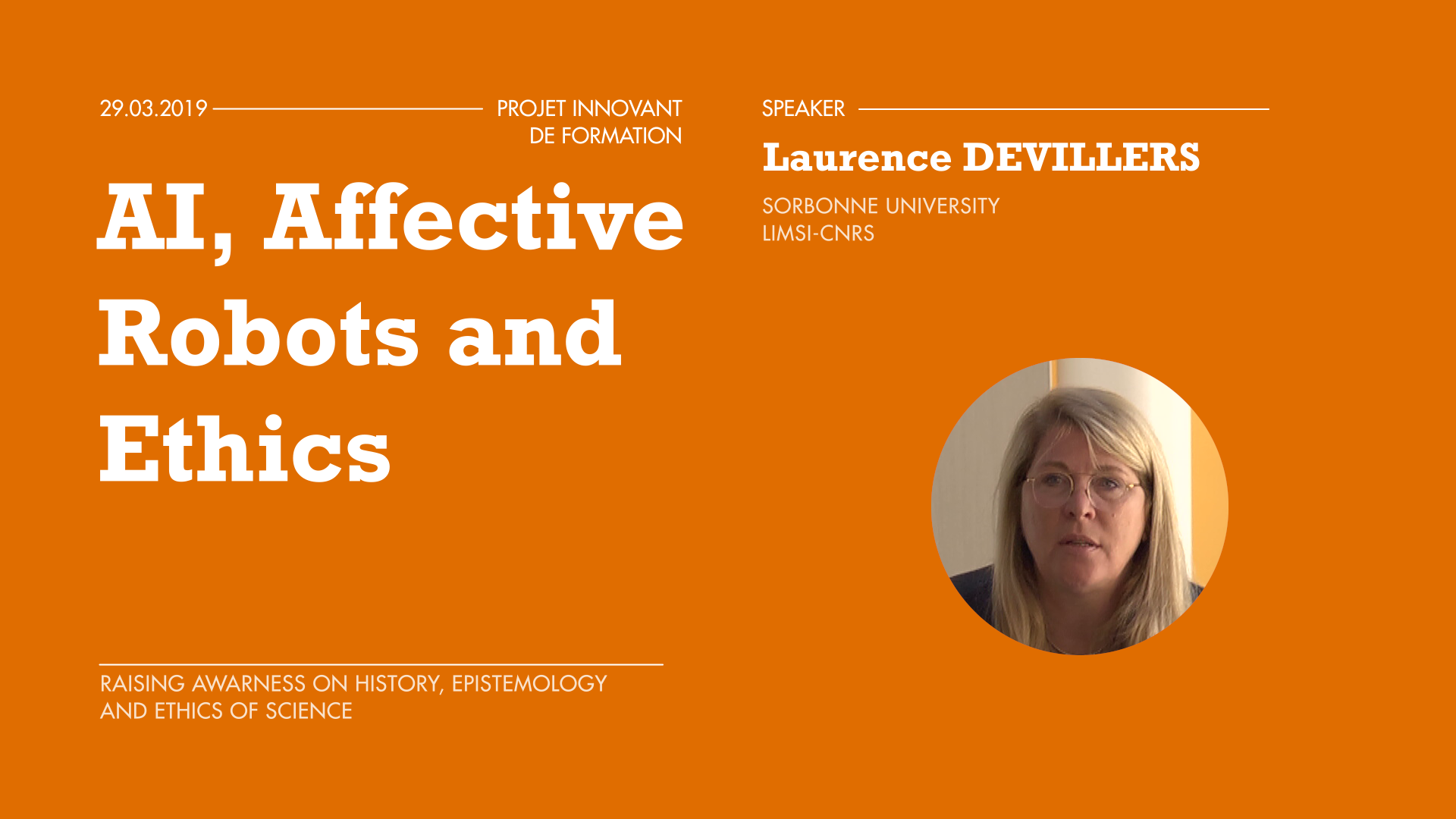
📥 Télécharger en HD
📄 Description de la vidéo
🏷 TITRE
Why do humans reason? by Hugo Mercier
📝 ABSTRACT
What does reason help humans do? Hugo Mercier starts his lecture by explaining how reason differs from intuition. He then defines the theory of the individualistic view of reasoning and cites René Descartes and Daniel Kahneman as its defendants. Mercier continues by giving an example of a reasoning test to show that reason is not accurate but helps humans in social interactions. To conclude his demonstration, Mercier enumerates a series of predictions about the human ability to reason. First, reason has a myside bias. Second, it shows selective laziness. Third, it enables better evaluation of arguments. The fourth prediction is a consequence of the first three ones: people tend to evaluate arguments more accurately when in a group than alone.
📖 SUMMARY
00:00:10 – Introduction
00:00:40 – 1. What is reason?
00:01:00 – 1.1. Intuition
00:01:50 – 1.2. Reason
00:03:48 – 2. Why do we reason?
00:04:05 – 2.1. The individualistic view of reasoning
00:05:00 – 2.2. Example of a reasoning test
00:10:27 – 2.3. Interactions
00:11:48 – 3. Series of predictions
00:11:53 – 3.1. Prediction 1: myside bias
00:12:45 – 3.2. Prediction 2: selective laziness
00:23:00 – 3.2. Prediction 3: good argument evaluation skills
00:28:23 – 3.4. Prediction 4: groups outperform individuals on reasoning tasks
00:35:50 – Conclusion
#️⃣ Mots clés : paris sciences lettres, psl, ethics, PhD, science, epistemology, reason, Descartes, Kahneman, prediction,
📸 Miniature YouTube
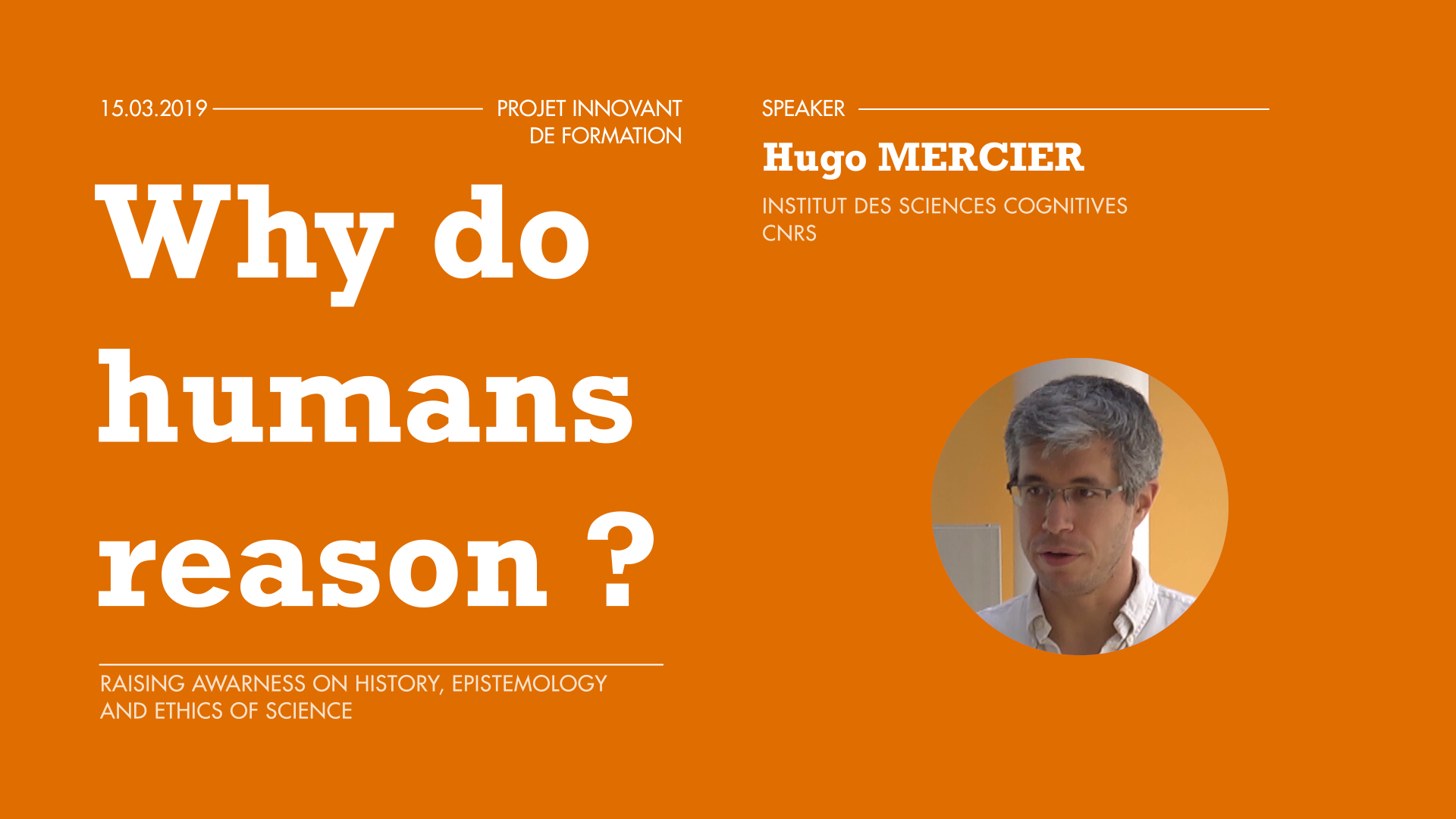
📥 Télécharger en HD
📄 Description de la vidéo
🏷 TITRE
What Kind of Personalized Medicine Does the Future Hold? by Marie Darrason
📝 ABSTRACT
Is personalized medicine as successful as we think? This is the question Marie Darrason considers in her lecture. She first gives a definition of personalized medicine before explaining its origins, its goals and its values. Darrason then examines the pros and cons behind the use of personalized medicine in health care. She emphasizes the fact that prediction and big data are challenging. She uses the example of targeted therapies for curing cancer to support her demonstration. She also explores the concept of personalized medicine from an institutional perspective, especially with the project France Genomique 2025. Darrason concludes her lecture by underlining the need of more education for researchers, doctors and patients to brighten the future of medicine.
📖 SUMMARY
00:00:10 – Introduction
00:01:25 – What is personalized medicine? Person-centered medicine, quantified self and precision medicine
00:08:35 – 1.The origins of personalized medicine
00:08:36 – 1.1.The Oslerian perspective
00:11:55 – 1.2.The human genome project
00:21:50 – 1.3.The 4 P’s of medicine : personalized, preventive, predictive and participatory
00:22:40 – 1.4.The core concepts of personalized medicine
00:23:45 – 2.Is personalized medicine a success? The case of personalized oncology
00:24:08 – 2.1.Traditional approaches to cancer
00:26:20 – 2.2.Precision oncology
00:28:05 – 2.3.The promises of targeted therapies
00:34:34 – 2.4.The limitations of targeted therapies
00:42:48 – 2.5.Other solutions?
00:45:46 – 3.Common core epistemological and ethical issues
00:46:00 – 3.1.Prediction and big data
00:49:24 – 3.2.The concept of “individual”
00:51:15 – 3.3.Data privacy, quality, storage, consent and equal access
00:52:30 – 4.Personalized medicine from an institutional perspective – France Genomique 2025
00:52:31 – 4.1.International initiatives
00:55:20 – 4.2.France Genomique 2025
01:02:25 – 4.3.Autonomy of technology versus technological choice
01:06:50 – 4.4.The power of loose concepts
01:08:05 – Conclusion
01:08:06 – What vision of personalized medicine does the future hold? The need for more education
#️⃣ Mots clés : paris sciences lettres, psl, ethics, PhD, science, epistemology, medicine, oslerian, france genomique,
📸 Miniature YouTube
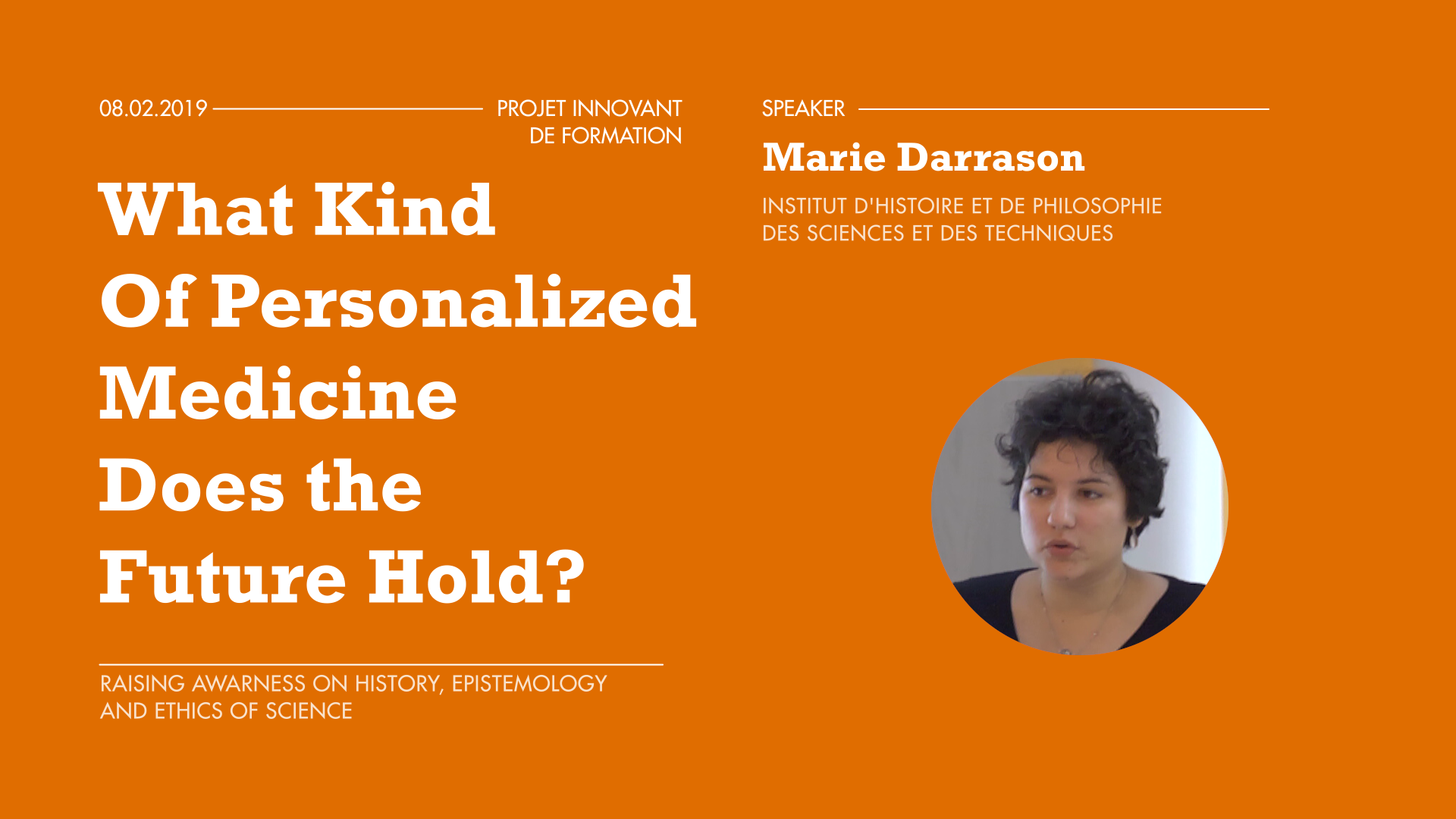
📥 Télécharger en HD
📄 Description de la vidéo
🏷 TITRE
Gendering Research and Higher Education: a Momentum? by Maxime Forest
📝 ABSTRACT
What are the gender issues in research and how can we overcome them? In his lecture, Maxime Forest starts by revealing the fundamental gender problems in science: horizontal and vertical segregation between men and women. He then explains the reasons behind these problems. The masculine image of science, gender blindness and gender bias all prevent women from performing as well as men in research. Forest continues his presentation by summarizing some European policies promoting gender equality in research. He speaks about the European Commission’s strategy behind these policies and enumerates some of their successes. He concludes by detailing the Egera experiment, a project conducted by Sciences Po Paris attempting to establish equality between men and women in academia.
📖 SUMMARY
00:00:10 – Introduction
00:02:10 – Acknowledgement
00:03:05 – 1. Gender issues in research
00:03:37 – 1.1. Horizontal segregation
00:07:10 – 1.2. Vertical segregation
00:14:45 – 2. Reasons behind gender issues in research
00:15:10 – 2.1. The masculine image of science
00:25:10 – 2.2. Gender blindness in research
00:42:50 – 2.3. Gender bias in research
00:52:20 – 3. Analysis of gender issues in research
00:53:00 – 3.1. Metaphors as explanations
00:56:00 – 4. European policies promoting gender equality in research
00:57:00 – 4.1. The European Commission’s strategy
01:02:15 – 4.2. Institutional change
01:08:25 – 4.3. A momentum for a Gender Equality Plan in research?
01:10:00 – 4.4. Successes of the policies : the Egera experiment
01:20:30 – Conclusion
#️⃣ Mots clés : paris sciences lettres, psl, ethics, PhD, science, epistemology, gender, equality, research, sciences po,
📸 Miniature YouTube

2017 / 2018
📥 Télécharger en HD
📄 Description de la vidéo
🏷 TITRE
To question the science - reportage
#️⃣ Mots clés : paris sciences lettres, psl, ethics, PhD, science, epistemology, ethics, university, philosophy, philosophy of science,
📸 Miniature YouTube
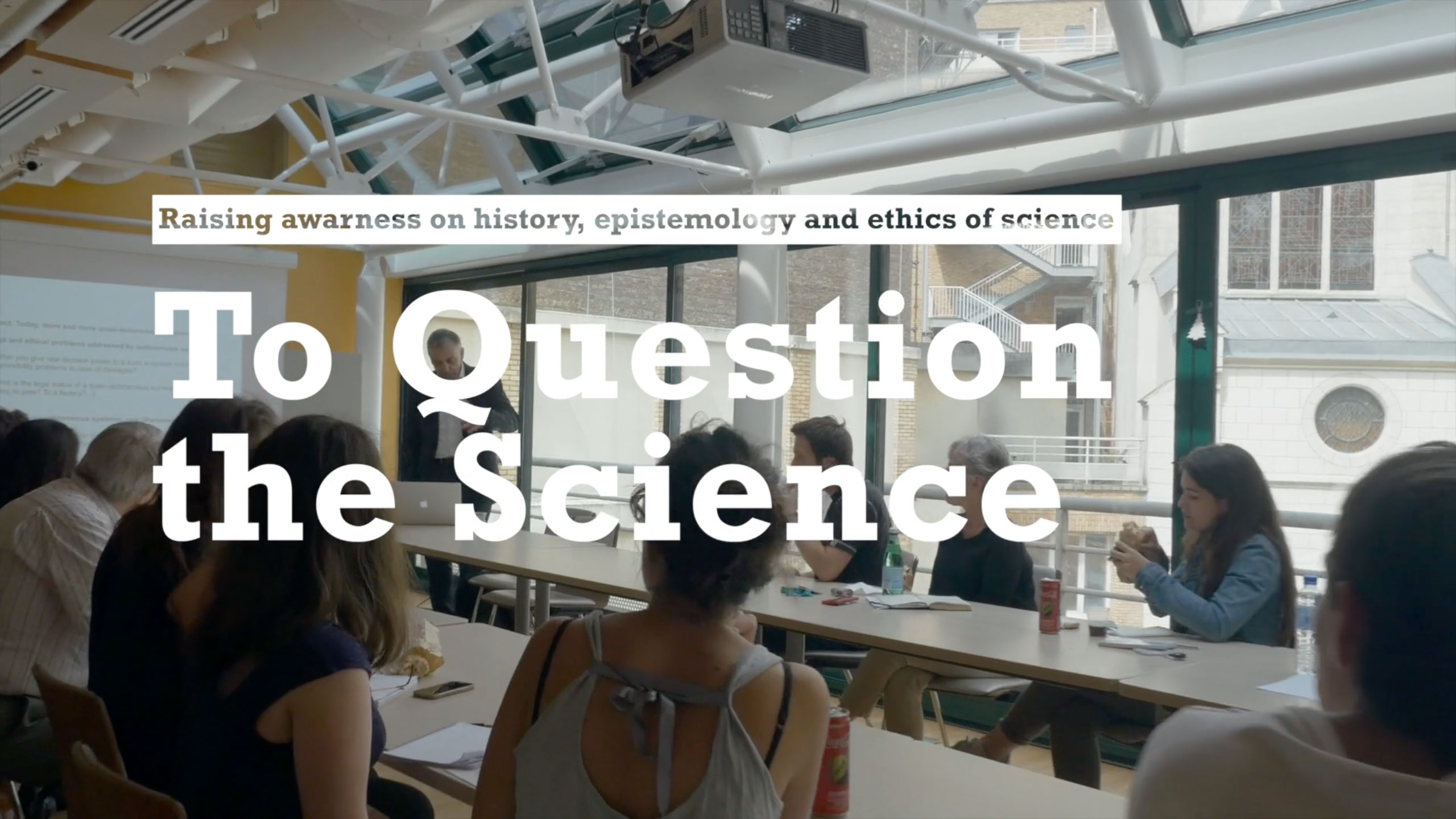
📥 Télécharger en HD
📄 Description de la vidéo
🏷 TITRE
From Ethics of Robotics to Ethics of Robots by Dominique Lambert
📝 ABSTRACT
What should the ethics be for robotics? Dominique Lambert starts his lecture by summarizing the legal and ethical problems facing human society with the development of autonomous systems. After having given a definition for robots and robotics, Lambert continues with the description of the different types of interactions between humans and machines. He then evokes essays and laws on robotics and recalls some of the philosophical points of view on responsibility. As a conclusion, Lambert proposes an ethical guideline for the future development of robotics.
📖 SUMMARY
00:00:10 – Introduction
00:00:40 – A. More and more quasi-autonomous systems
00:01:00 – B. Legal and ethical problems addressed by autonomous systems
00:07:30 – C. Ethics of quasi-autonomous systems: a new phenomenon
00:08:10 – 1. What is a robot?
00:08:25 – 1.1. Definition by Karel Capek
00:08:30 – 1.2. A machine that senses, thinks and acts
00:19:50 – 2. Classification of interactions between humans and machines
00:20:20 – 2.1. Humans in the loop
00:21:30 – 2.2. Humans on the loop
00:30:00 – 2.3. Humans out of the loop
00:33:30 – 3. Ethics of research in robotics
00:34:05 – 3.1. Droit des robots by Alain and Jérémy Bensoussan
00:34:23 – 3.2. Project report at the European Parliament by Mady Delvaux
00:38:10 – 3.3. Philosophical points of view on responsibility
00:39:00 – 3.3.1. Robotization of law
00:47:35 – 3.3.2. Robotization of finance
00:48:55 – 3.3.3. Robotization of war
00:49:30 – Conclusion
00:52:20 – A. Ethical guidelines
#️⃣ Mots clés : paris sciences lettres, psl, ethics, PhD, science, epistemology, robots, AI, ethics, artificial intelligence,
📸 Miniature YouTube
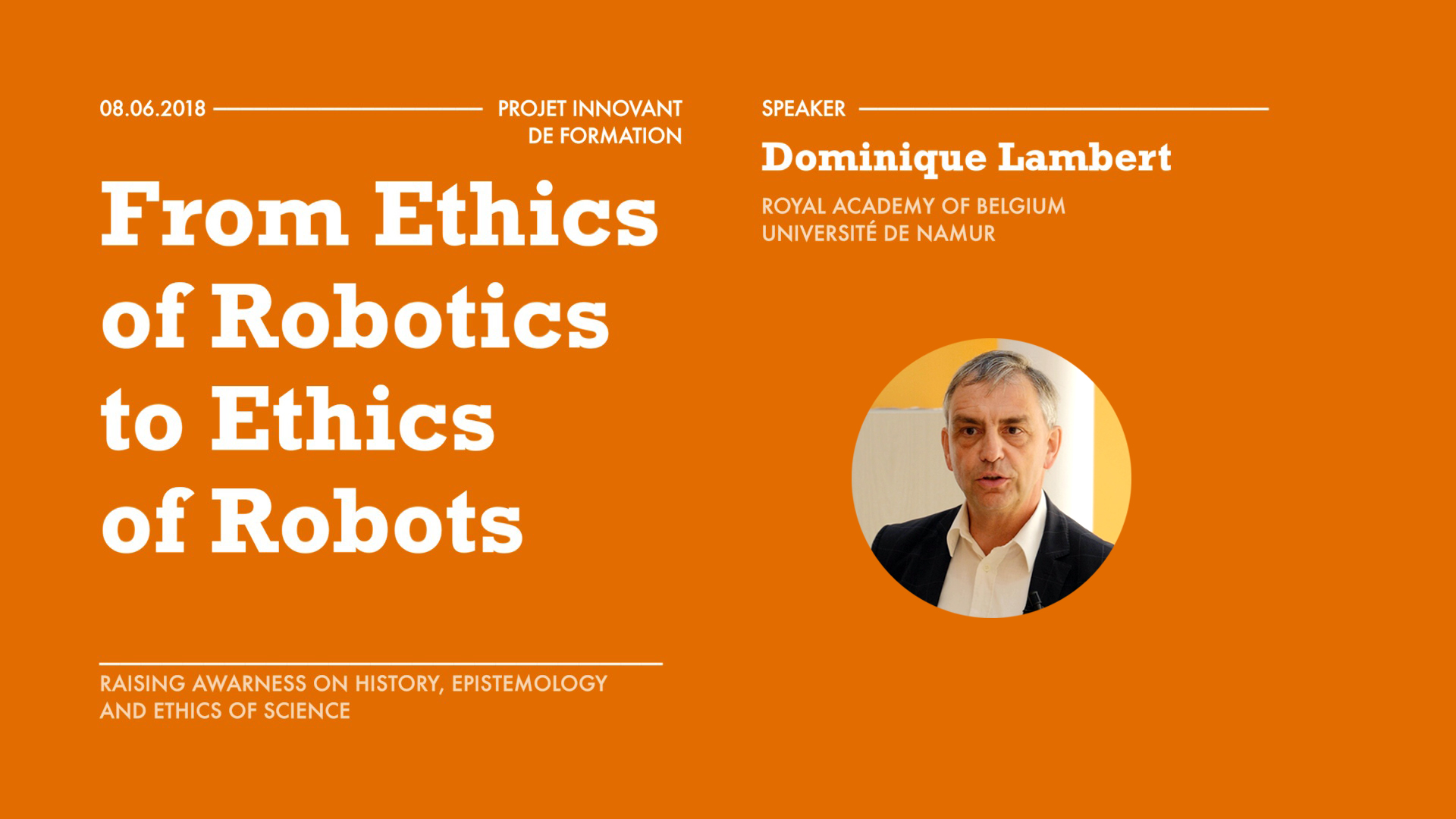
📥 Télécharger en HD
📄 Description de la vidéo
🏷 TITRE
Differences between humans and (other) animals and ethical consequences by Georges Chapouthier
📝 ABSTRACT
Are human beings like any other animals? This is the question Georges Chapouthier answers by showing the thin limits between animality and humanity. Chapouthier starts his lecture by summarizing the human point of view on animals throughout history, and then recalls the similarities between human beings and animals, culture-wise and intelligence-wise. To prove his point, he gives numerous examples of elephants, monkeys, dolphins and birds that demonstrate their culture and intelligence. Chapouthier ends his presentation by listing the characteristics that make human beings different from animals among which are the concept of duration, the use of imagination, and the importance of neoteny.
📖 SUMMARY
00:00:10 – Introduction
00:03:25 – 1. The biological “nature” of human beings
00:03:30 – 1.1. Humans and animals in civilization
00:04:03 – 1.1.1. Animals as human beings
00:11:00 – 1.1.2. Animals as objects
00:15:50 – 1.1.3. Animals as sentient beings
00:18:20 – 1.2. Human beings as “nature”
00:19:40 – 2. Similarities in culture and intelligence between human beings and animals
00:20:26 – 2.1. Do animals have culture?
00:21:50 – 2.1.1. Tools
00:25:50 – 2.1.2. Rules
00:30:10 – 2.1.3. Communication and language
00:37:50 – 2.1.4. Ethics
00:40:10 – 2.1.5. Aesthetical choices
00:43:10 – 2.1.6. Memory and memories
00:49:10 – 2.1.7. Consciousness
00:52:15 – 2.2. Conclusions on the position of human beings
00:52:50 – 3. The specificities of human beings
00:56:01 – 3.1. Existential experience of duration
00:56:49 – 3.2. Realm of imagination
00:58:00 – 3.3. Importance of neoteny
01:00:05 – 3.4. Quantity or quality of human specificities?
01:01:28 – 3.5. Continuity or discontinuity between human beings and animals?
01:02:07 – 3.6. Moral consequences
01:03:45 – 3.6. Conclusion
#️⃣ Mots clés : paris sciences lettres, psl, ethics, PhD, science, epistemology, animals, homo sapiens sapiens, human being, science ethic,
📸 Miniature YouTube
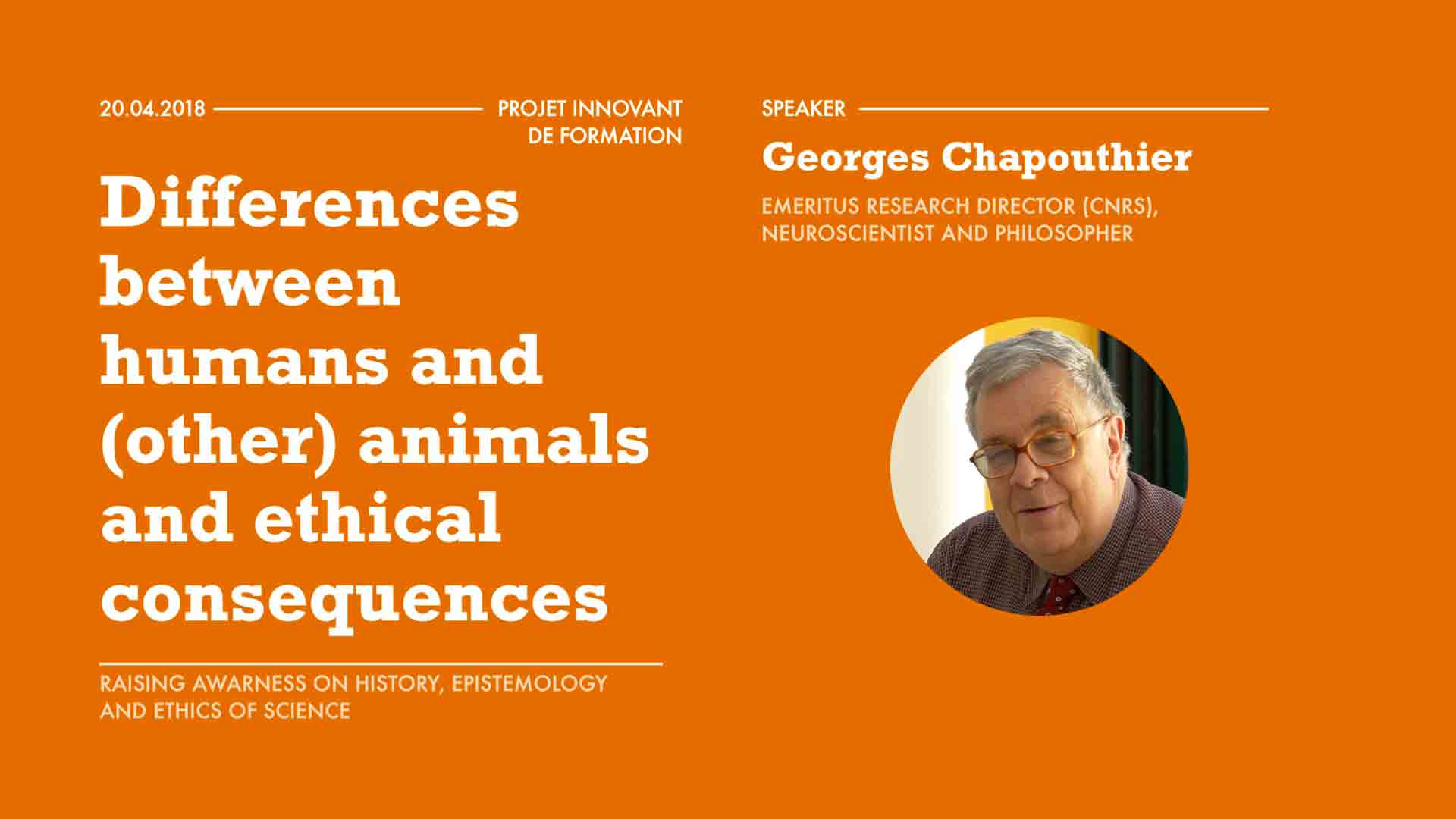
📥 Télécharger en HD
📄 Description de la vidéo
🏷 TITRE
Researchers' Roles in Responsible Conduct of Research by Michele Garfinkel
📝 ABSTRACT
Why and how do scientists have to be responsible? Michele Garfinkel starts her lecture by presenting the scientific organization she is working for, EMBO. She first describes the “Science Policy Programme” developed at EMBO that examines concerns emerging from advances in scientific research, and then explains that the program helps strengthen research integrity by underlining conflicts of interest. Garfinkel defines what a conflict of interest is before giving examples of such conflicts. She finishes her lecture by talking about the scientific publishing system at EMBO, developing a few examples about accepted or refused scientific papers, and describing new approaches to improve scientific responsibilities.
📖 SUMMARY
00:00:10 – Introduction
00:02:10 – 1. Presentation of EMBO
00:08:12 – 2. Presentation of the EMBO’s “Science Policy Programme”
00:10:45 – 2.1. Governance
00:12:10 – 2.2. Why be responsible?
00:15:57 – 2.3. Responsible conduct of research
00:18:42 – 2.4. Research integrity
00:20:18 – 3. Conflicts of interest
00:21:40 – 3.1. Definition
00:23:00 – 3.2. Conflicts of interest in science
00:23:14 – 3.2.1. Financial
00:24:28 – 3.2.2. Personal
00:25:02 – 3.2.3. Professional
00:26:15 – 3.2.4. Scholarly
00:27:10 – 3.3. How common are conflicts of interest?
00:28:05 – 3.4. Example of Michel Aubier’s false testimony
00:29:20 – 3.5. Example of Jesse Gelsinger’s death
00:36:50 – 3.6. Conflicts of interest do matter
00:37:24 – 4. Publishing
00:38:25 – 4.1. Presentation of EMBO’s scientific publications
00:39:05 – 4.2. Core principles of EMBO’s publications
00:42:30 – 4.3. Problems related to scientific publishing
00:48:40 – 4.4. Examples : fraud or beautification?
00:55:55 – 4.5. EMBO’s pre-publication image screening
00:58:19 – 4.6. EMBO’s peer review system
01:07:20 – 4.7. Examples of scientific papers submitted to EMBO
01:13:20 – 4.7. New approaches
01:20:40 – Conclusion : our responsibilities
#️⃣ Mots clés : paris sciences lettres, psl, ethics, PhD, science, epistemology, michele garfinkel, EMBO, Research integrity, research
📸 Miniature YouTube
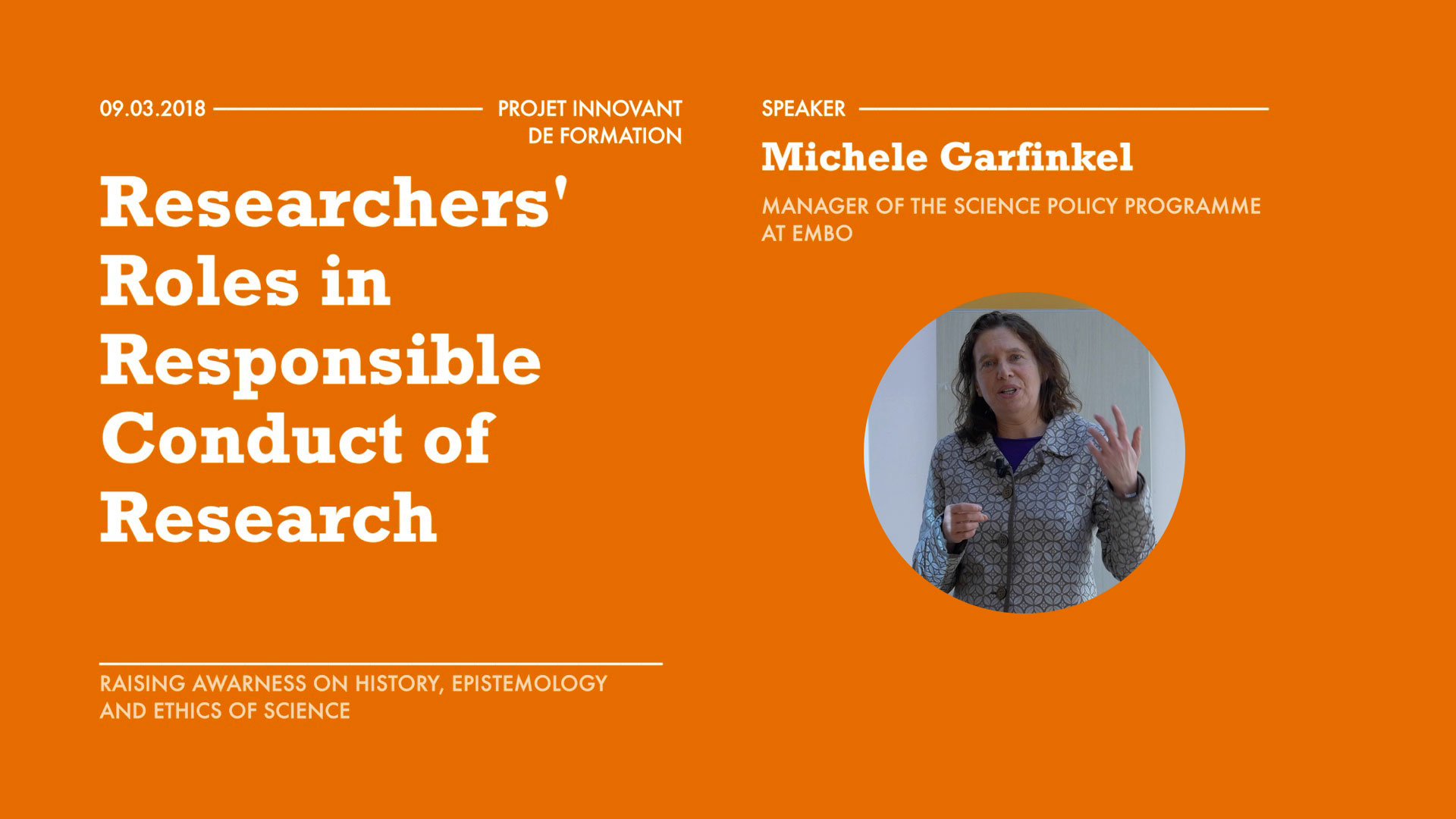
📥 Télécharger en HD
📄 Description de la vidéo
🏷 TITRE
From a Latourian perspective to feminist epistemology:
Using social studies of science to build stronger research & fruitful science & society interactions
by Livio Riboli-Sasco, co-director of "Ateliers des jours à venir"
📝 ABSTRACT
How can sociology and anthropology help science to improve? This is the question Livio Riboli-Sasco discusses in his lecture. He starts by explaining Merton’s scientific values of universalism, communism, disinterestedness and organized skepticism. He also underlines the cultural rituals of research in laboratories. He then shows how scientists’ social backgrounds influence the research they do and the results they find. This observation leads him to stress the need for diversity of perspectives in science. At the end of his lecture, Livio Riboli-Sasco develops examples of how to include laypersons in scientific research. He advocates for a slower process of research and asks for more time to consult with society.
📖 SUMMARY
00:00:10 – Introduction
00:01:37 – 1. “The Normative Structure of Science”, an article by Robert K. Merton
00:02:00 – 1.1. Merton’s scientific values: universalism, communism, disinterestedness and organized skepticism
00:07:58 – 2. Laboratory Life, a book by Bruno Latour and Steve Woolgar
00:09:54 – 2.1. Cultural rituals in scientific laboratories
00:13:49 – 2.1.1. La vie après la mort d’Henrietta Lacks, a short film by Mathias Théry
00:15:17 – 2.2. The social construction of facts
00:16:40 – 2.2.1. The cycle of credit
00:21:58 – 2.2.2. The imperfections of the scientific publishing system
00:25:28 – 3. An Inquiry into Modes of Existence, a book by Bruno Latour
00:25:50 – 3.1. The online platform http://modesofexistence.org/
00:26:50 – 3.2. Anthropological considerations about science
00:32:05 – 3.3. Should we trust science?
00:34:00 – 4. Who are the scientists?
00:34:37 – 4.1. Donna Haraway
00:35:16 – 4.2. The egg and the sperm
00:38:51 – 4.3. “Sex redefined”, an article in Nature (2015 - February, 18) by Claire Ainsworth
00:43:51 – 4.4. L’Origine du Monde, a comic strip by Liv Strömquist
00:46:43 – 4.5. Improvements in primatology
00:48:00 – 4.6. Pierre Bourdieu’s ideas about society
00:57:00 – 5. The standpoint theory
00:58:30 – 5.1. Being aware of who you are gives a stronger objectivity
00:59:00 – 5.2. The need for diversity in science
00:59:30 – 5.3. Fondation de France and Atelier des Jours à Venir’s collaboration
01:08:15 – Conclusion
#️⃣ Mots clés : paris sciences lettres, psl, ethics, PhD, science, epistemology, Livio Riboli-Sasco, citizen science, feminism, Latourian,
📸 Miniature YouTube
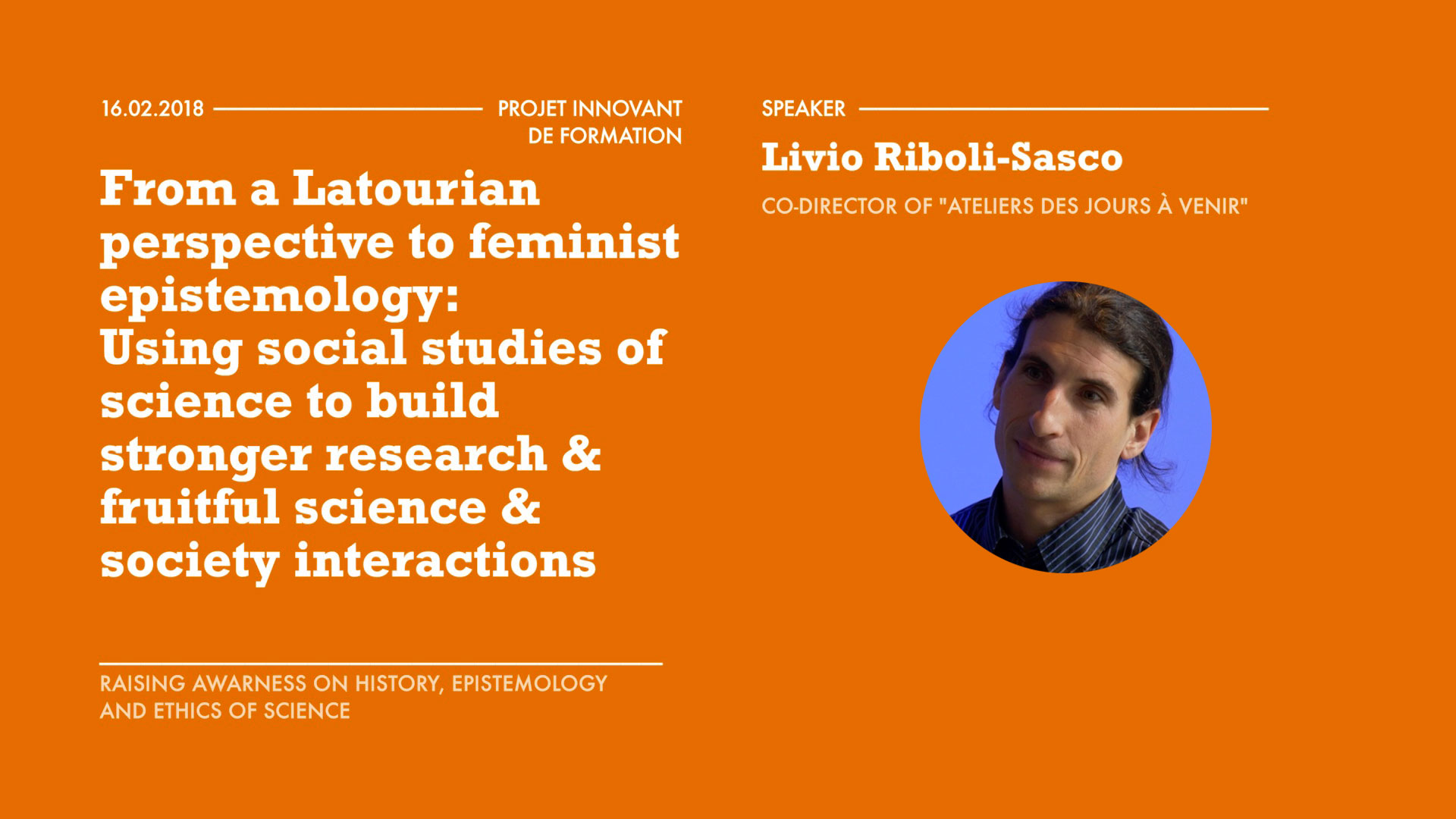
📥 Télécharger en HD
📄 Description de la vidéo
🏷 TITRE
THE NEW LIFE OF SCIENTIFIC DRAWING BY RENAUD CHABRIER & MATTHIEU PIEL
📝 ABSTRACT
How can drawing make science easier to understand? Renaud Chabrier starts the lecture with an overview on the relationship between science and drawing throughout history. He exposes a variety of examples including Lorenzetti’s painting, Da Vinci’s drawings and Bosch’s sketches. Matthieu Piel then sums up the main steps of his research on cell migration. He expounds on the “Migrate with cells” project he has developed with Renaud Chabrier. He also talks about his collaboration with Ana-Maria Lennon-Duménil and the movie he has made for the American Society for Cell Biology. The lecture ends with a presentation of Globule, an illustrated book that makes cell biology accessible to the general public.
📖 SUMMARY
00:00:00 – Introduction
00:01:50 – 1. The relationship between drawing and science throughout history
00:01:56 – 1.1. Lorenzetti’s painting and the start of central perspective in art
00:03:49 – 1.2. The animated paintings from the Lascaux and Chauvet caves
00:07:15 – 1.3. The representation of movement in Da Vinci’s drawings
00:14:50 – 1.4. The concept of abstraction in Bosch’s sketches
00:16:45 – 1.5. The scientific representation of the body in Hooke and Haeckel’s drawings
00:20:13 – 1.6. The mastering of perspective in 19th century paintings
00:22:17 – 1.7. Breaking the rules of perspective with Manet
00:22:50 – 1.8. The use of photography by Koch and Marey
00:27:12 – 1.9. Contemporary scientific representation of elements by Radvanyi and Allory
00:30:57 – 2. Piel and Chabrier’s collaboration on cell migration
00:32:35 – 2.1. Piel’s resume, from microfluidic channels to “Migrate with cells”
00:35:24 – 2.2. “Migrate with cells”, Piel and Chabrier’s workshop for children
00:43:16 – 2.3. Piel and Lennon-Duménil’s research on immune cell migration
00:48:00 – 2.4. Piel and Chabrier’s collaboration on the MICEMICO project
00:52:25 – 2.5. The Big Squeeze, Piel and Chabrier’s movie for the American Society for Cell Biology
00:59:05 – 3. Globule, Piel, Lennon-Duménil and Chabrier’s book on cell biology
01:00:20 – 3.1. The genesis of Globule
01:02:02 – 3.2. The story of Globule
01:10:38 – 3.3. The storytelling’s technique in Globule
01:11:55 – 3.4. Chabrier’s new graphic novel project on cell biology
01:14:27 – Conclusion
#️⃣ Mots clés : paris sciences lettres, psl, ethics, phd, science, epistemology, institut curie, scientific drawing, Matthieu Piel, Renaud Chabrier,
📸 Miniature YouTube
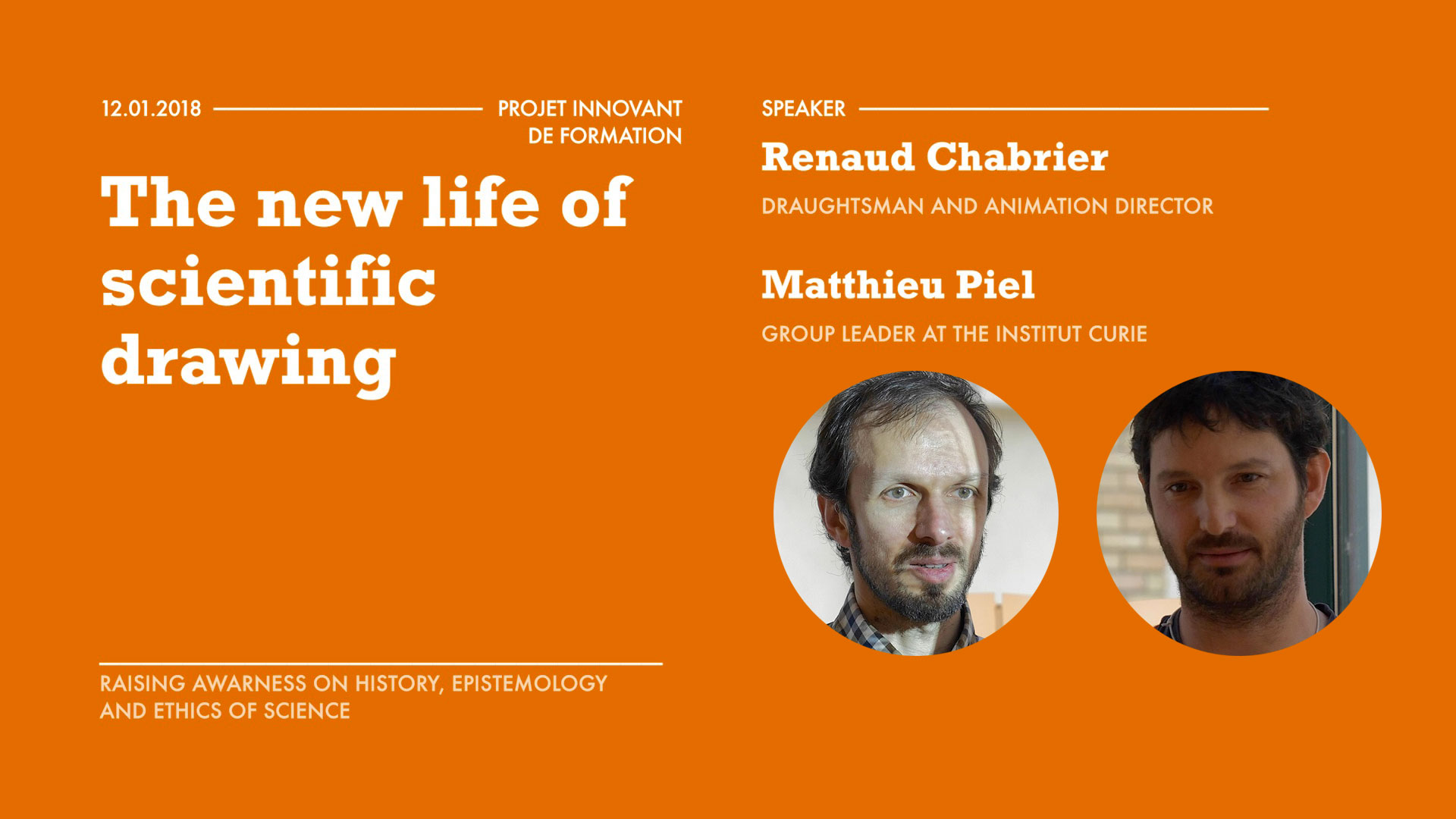
2016 / 2017
📥 Télécharger en HD
📄 Description de la vidéo pour YouTube
WHAT CHANGED IN MEDICINE… BY VASSILI SOUMELIS
📝 ABSTRACT
Does science help medicine to improve? Vassili Soumelis begins his lecture by surprisingly claiming that medicine is not a scientific activity but an empirical art. However, he says, science has helped medicine become more efficient throughout history, especially statistics, chemistry and biology. For each of these sciences, Soumelis exposes examples where medicine improved thanks to scientific knowledge. He concludes his presentation with the historical example of tobacco, first developed as a therapeutic substance and later considered as dangerous to one’s health.
📖 SUMMARY
00:00:10 – 1. Introduction
00:00:11 – 1.1. Notions of living systems
00:04:09 – 1.2. Definition of medicine
00:10:14 – 1.3. The different aspects and time scales of patient medical care
00:15:20 – 2. Medicine and science
00:19:00 – 2.1. History of medicine
00:27:45 – 2.2. Revolutions in medicine
00:28:26 – 2.2.1. Statistics
00:43:55 – 2.2.2. Chemistry
00:52:24 – 2.2.3. Biology
01:09:56 – 3. How science helped medicine?
01:10:50 – 3.1. The historical example of tobacco
01:21:40 – 3.2. What about today: cellphone, GMOs?
01:25:56 – 4. Conclusion
#️⃣ Mots clés : paris sciences lettres, psl, ethics, phd, science, epistemology, VASSILI SOUMELIS, medicine, institut curie,
📸 Miniature YouTube
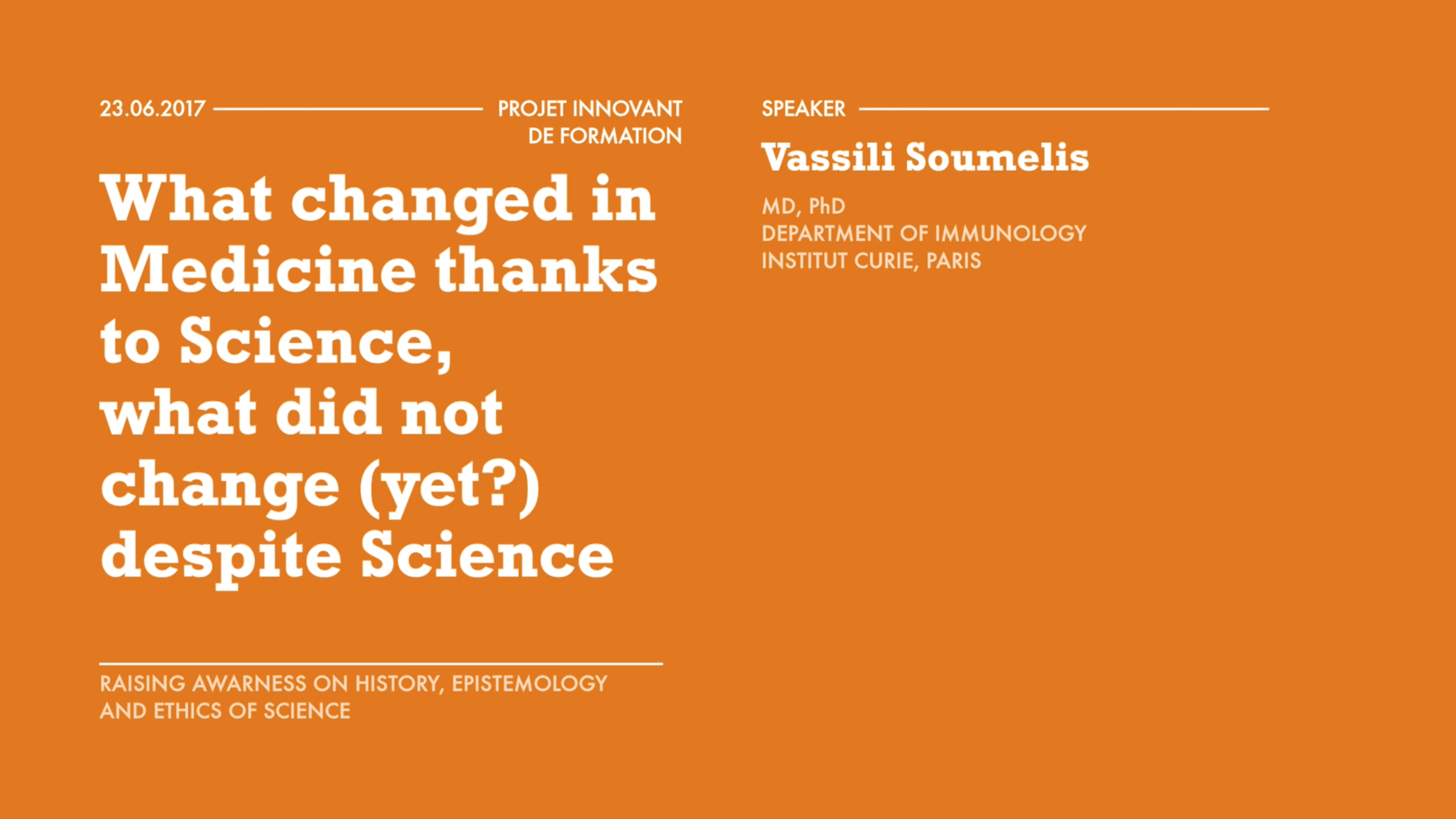
📥 Télécharger en HD
SCIENCE AND POLITICAL IDEOLOGY… BY UTE DEICHMANN
📄 Description de la vidéo pour YouTube
📝 ABSTRACT
What was the predominant scientific and political ideology in Nazi Germany? How was science conducted under Hitler? Are German scientists responsible for the Holocaust? In her lecture, Ute Deichmann answers these questions in detail. She begins her talk by recalling the definition of ideology and explaining it in the context of Nazi Germany. She then talks about the eviction of Jewish scientists under Hitler and the ideological transformation of science in universities and laboratories at the time. She tells the audience about the specific topic of race hygiene and euthanasia in Nazi Germany before finishing her talk by explaining the Nazi viewpoint on ecology and environmental medicine.
📖 SUMMARY
00:00:10 – 1. Introduction
00:00:50 – 1.1. What is ideology?
00:00:52 – 1.1.1. Definition of ideology
00:03:35 – 1.1.2. Totalitarian ideologies
00:12:20 – 2. Eviction of scientists who did not fulfill the “racial” criteria
00:12:25 – 2.1. The measures of eviction
00:14:35 – 2.2. Statistics
00:18:50 – 2.3. Resistance to the measures of eviction against Jewish scientists
00:21:32 – 3. Ideological transformation of science in Nazi Germany
00:22:39 – 3.1. Scientific principles
00:22:49 – 3.2. Aryan physics
00:25:28 – 3.3. Johannes Stark
00:36:42 – 3.4. Comparison with Stalinist USSR
00:36:43 – 3.4.1.Trofim Lysenko
00:43:47 – 3.4.2. Nowadays rebirth of Lysenko’s ideology
00:50:30 – 3.5. Similarities and differences between Stark and Lysenko
00:51:50 – 4. Race hygiene and euthanasia
00:54:10 – 4.1. Nazi laws
00:55:30 – 4.2. Application of the laws
01:13:24 – 5. Ecology, environmental and alternative medicine in Nazi Germany
01:13:25 – 5.1. Ecology
01:16:05 – 5.2. Environmental medicine
01:17:25 – 5.2.1. Results
01:20:45 – 5.3. The role of political leaders
01:25:51 – 6. Conclusion
#️⃣ Mots clés : paris sciences lettres, psl, ethics, phd, science, epistemology, ute deichmann, nazi germany, ideology,
📸 Miniature YouTube
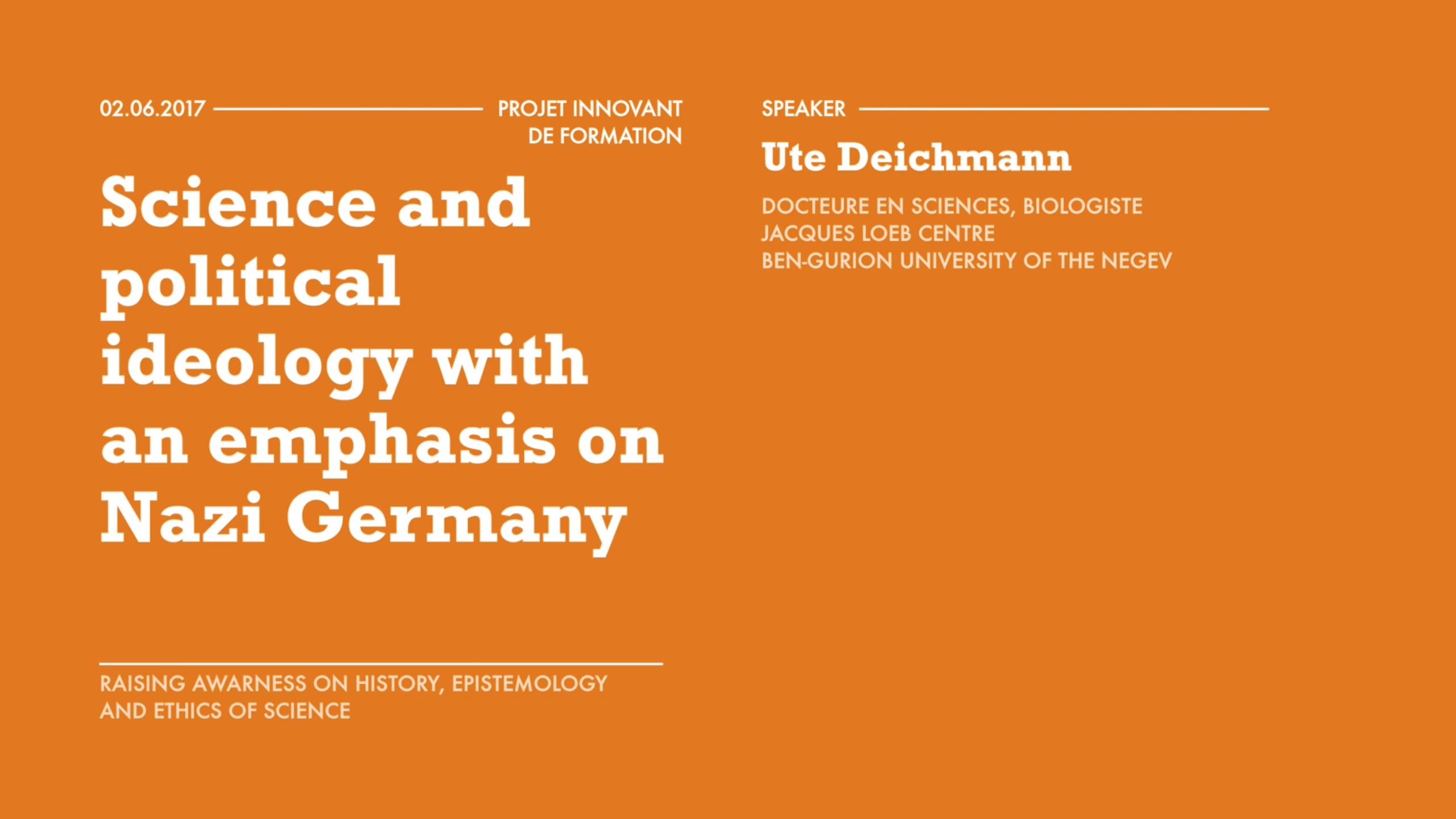
📥 Télécharger en HD
📄 Description de la vidéo pour YouTube
INTRODUCTION BY MICHEL MORANGE
📝 ABSTRACT
In his introduction to Jean-Pierre Changeux’s lecture on the link between neuroscience and art, Michel Morange briefly introduces the neurobiologist.
📖 SUMMARY
00:00:10 – 1. Presentation of Jean-Pierre Changeux
#️⃣ Mots clés : paris sciences lettres, psl, ethics, phd, science, epistemology, art, jean-pierre changeux, cognitive conscience, brain,
📸 Miniature YouTube
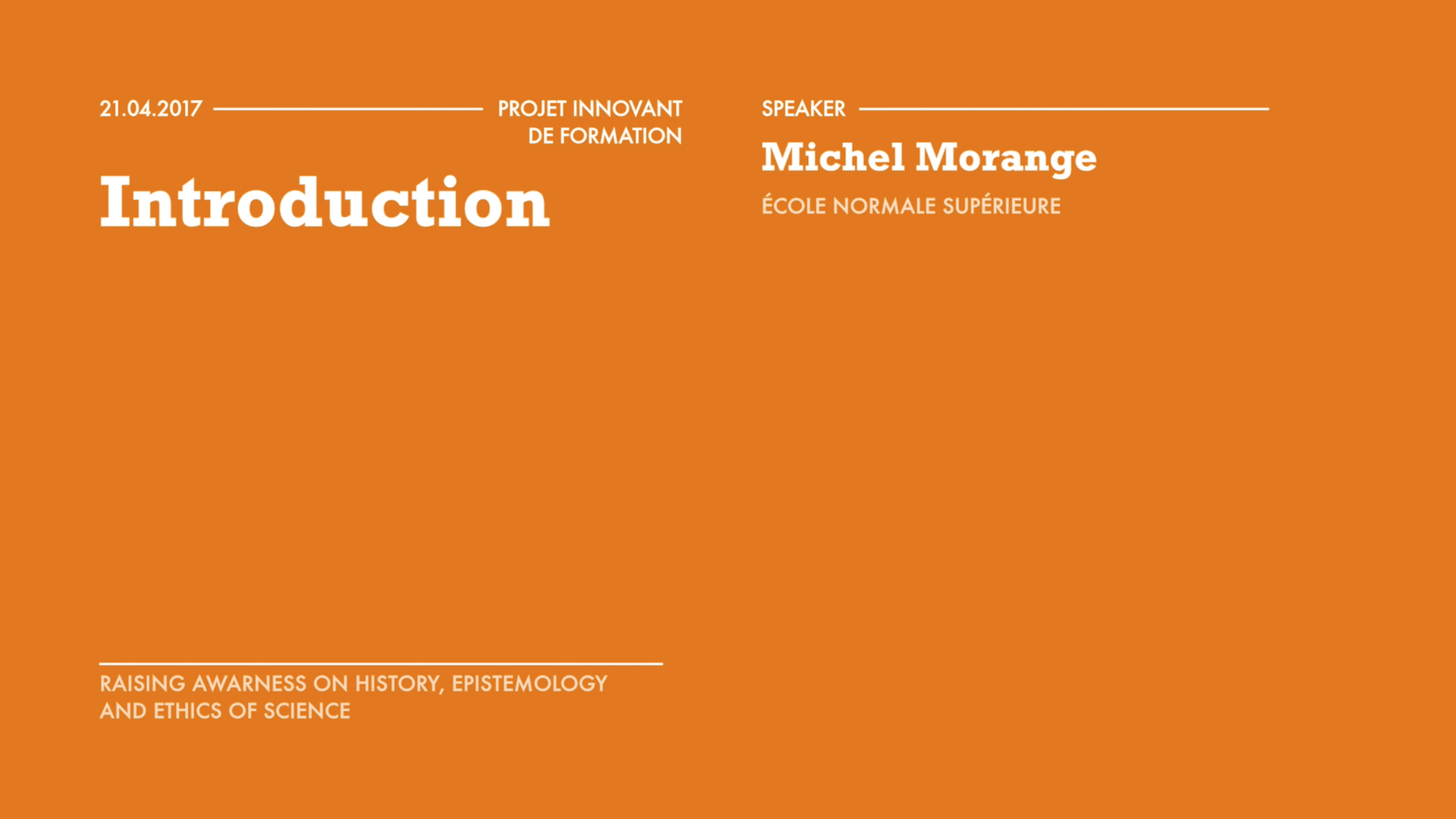
📥 Télécharger en HD
📄 Description de la vidéo pour YouTube
DOES A NEUROSCIENCE… BY JEAN-PIERRE CHANGEUX
📝 ABSTRACT
Does a neuroscience of art make sense? To answer this question, Jean-Pierre Changeux begins his lecture by giving a definition of art and aesthetics. He then explains how the human brain works from a neurologist’s point of view, and details its evolution throughout prehistory. Changeux’s goal is to demonstrate the link between art and cognitive conscience. To do so, he shows the audience how cultural experiences make the brain react. Genes, he says, are 100% responsible for neural development. And so are aesthetic experiences, he ads with humor. Changeux finishes his lecture by claiming that rules exist in art, and he even gives examples of these rules: novelty, surprise, and parsimony.
📖 SUMMARY
00:00:10 – 1. Introduction
00:02:32 – 2.Art
00:02:35 – 2.1. A definition of art and aesthetics
00:09:43 – 2.2. The evolution of art
00:12:08 – 2.3. Links between art and cognitive conscience
00:14:10 – 3. Neurology
00:14:15 – 3.1. The building blocks of the brain
00:18:50 – 3.2. The evolution of the brain
00:24:40 – 3.2.1. The artist’s “habitus”
00:28:30 – 3.2.2. Discovery of art with Homo sapiens?
00:29:32 – 3.2.3. Genetic deficit in music perception
00:31:30 – 3.2.4. The human genome and the non-linear evolution of brain complexity
00:36:20 – 3.2.5. Innate universal disposition of the human newborn
00:42:55 – 3.2.6. The cultural evolution of the brain
00:42:55 – 3.3. The sacrifice of Paetus by Antoine Rivalz
00:47:30 – 3.4. L’image disparaît by Savador Dali
00:48:50 – 3.5. Processing of visual image: emotion and feeling
00:58:40 – 3.6. Neuronal bases of esthetic efficacy
01:00:38 – 3.7. Sainte Anne by Leonardo da Vinci
01:03:22 – 4. Creation and the rules of art
01:03:59 – 4.1. The concept of “epigenetic rule”
01:08:36 – 4.2. Some rules of art: novelty, surprise, and parsimony
01:12:26 – 4.3. Brain potentials reflect semantic incongruity
01:13:44 – 4.4. Oneself-as-another: the search for shared recognition
01:14:11 – 4.5. The exemplum
01:14:40 – 4.6. A Darwinian model of creation
#️⃣ Mots clés : paris sciences lettres, psl, ethics, phd, science, epistemology, art, jean-pierre changeux, cognitive conscience, brain,
📸 Miniature YouTube
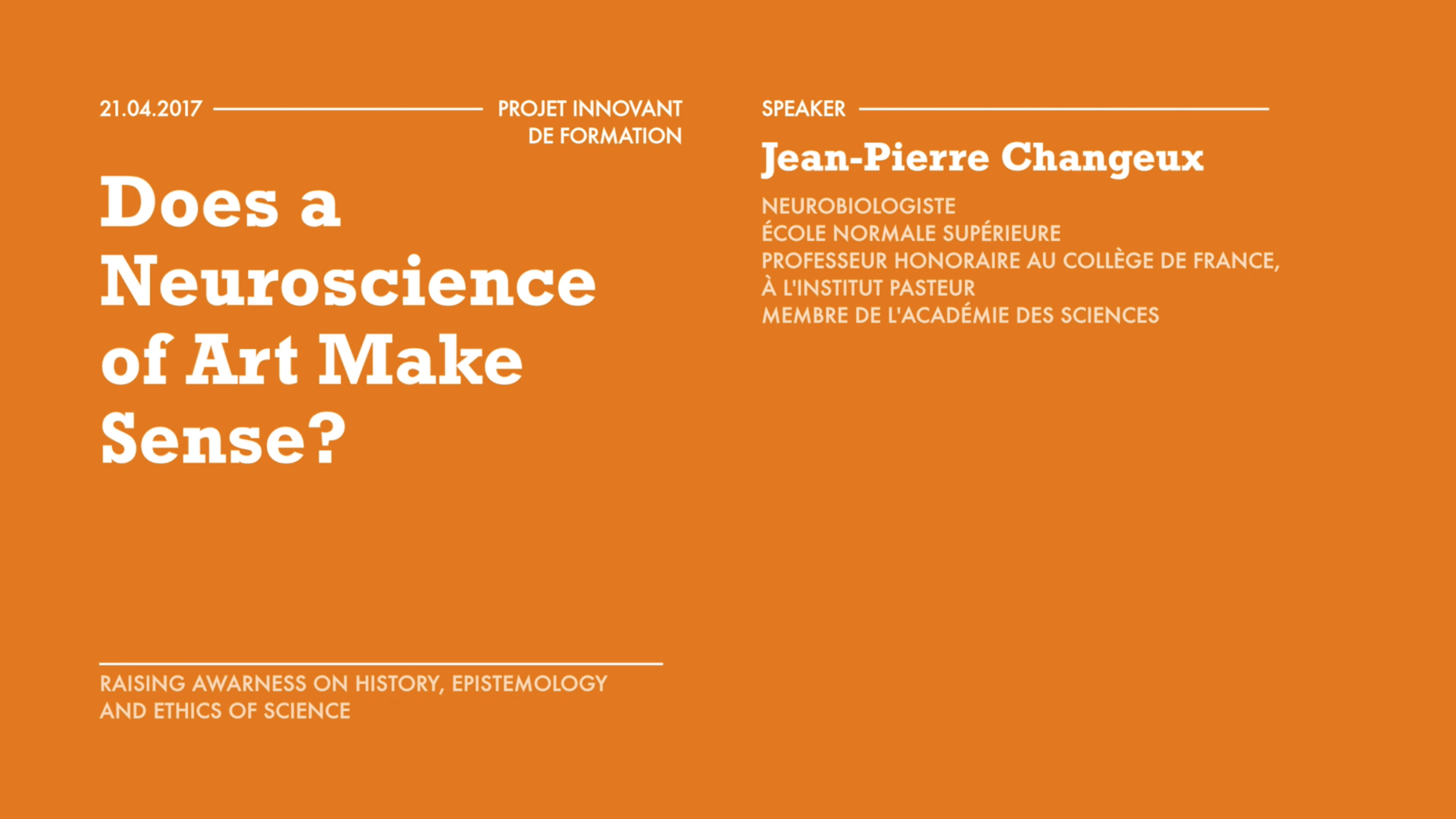
📥 Télécharger en HD
📄 Description de la vidéo pour YouTube
INTRODUCTION ETHICS BY MICHEL MORANGE
📝 ABSTRACT
What is ethics? How should ethics influence the way we think and act? In his introduction to Michèle Leduc’s lecture, Michel Morange uses numerous examples of ethical issues throughout history, from Louis Pasteur to Olivier Voinnet. He recalls the different types of fraud and misconduct in science, and points out the emergence of rules to prevent them.
📖 SUMMARY
00:00:10 – 1. Introduction
00:00:15 – 1.1. Definition of ethics
00:01:50 – 2. Ethical issues in science
00:03:15 – 2.1. An historical issue of the 1660’s
00:04:50 – 2.2. The emergence of rules
00:07:02 – 3. Historical examples
00:07:03 – 3.1. Frauds and misconducts in science
00:13:30 – 3.2. Transformations in the 20th century
#️⃣ Mots clés : paris sciences lettres, psl, ethics, phd, science, epistemology, plagiarism, research, michèle leduc, frauds,
📸 Miniature YouTube
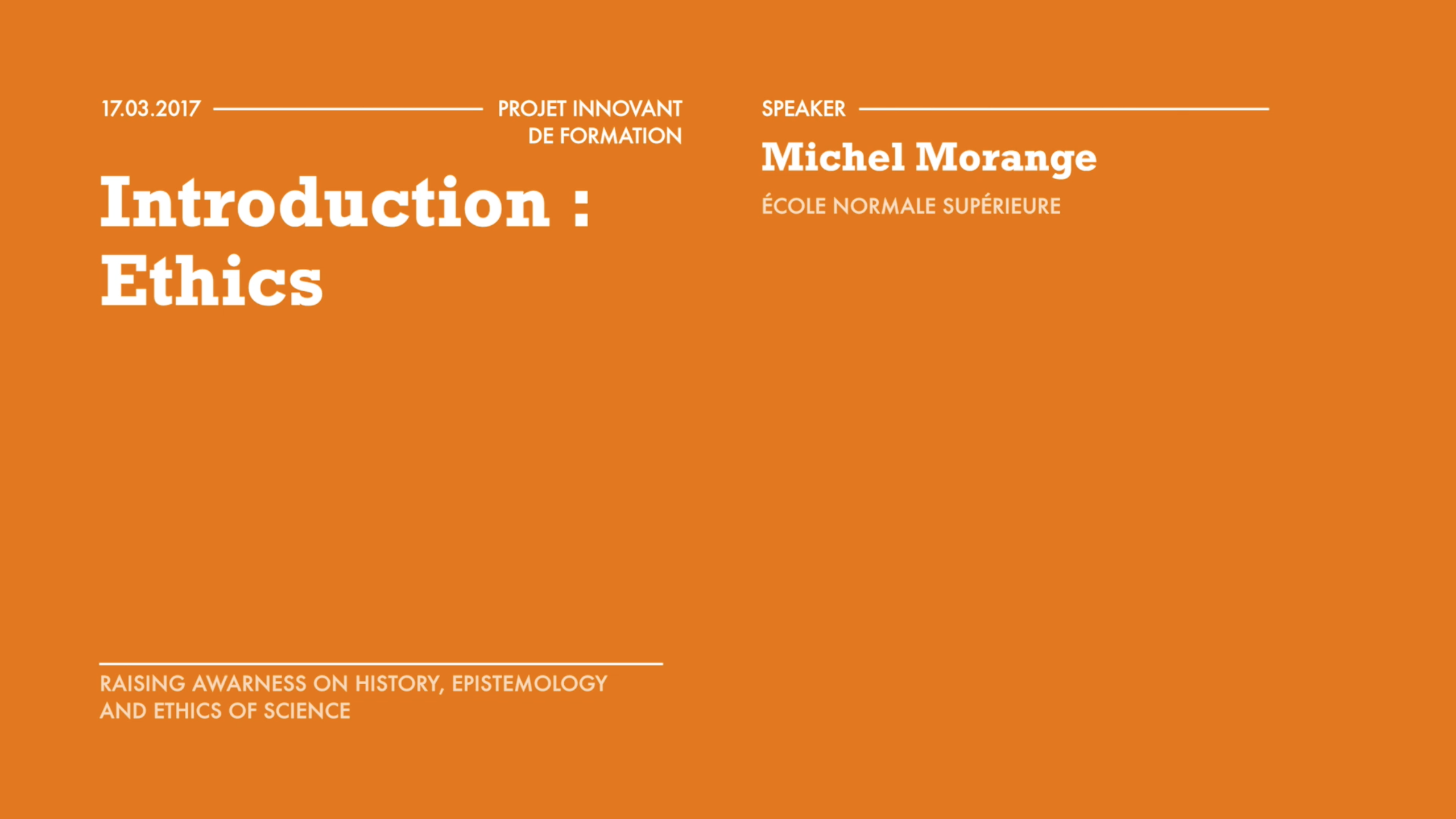
📥 Télécharger en HD
📄 Description de la vidéo pour YouTube
INTEGRITY AND RESPONSIBILITY… BY MICHÈLE LEDUC
📝 ABSTRACT
Who tracks fraud and misconduct? How do scientific communities prevent scientists from falsifying their research? In her lecture, Michèle Leduc starts by introducing COMETS, the French scientific ethical committee she works for. She then talks about the necessity of integrity in science, and lists several examples of misconduct that have been observed amongst scientists. Leduc mentions different ways to prevent such misbehaviors, naming ethical committees, self-examination and control websites. She talks at length about the case of Olivier Voinnet and the consequences of his actions. She concludes her lecture by calling for the responsibility of scientists in their research.
📖 SUMMARY
00:00:10 – 1. Introduction
00:00:25 – 1.1. Presentation of COMETS
00:13:02 – 2. Integrity
00:13:03 – 2.1. Definition of integrity
00:13:56 – 2.2. Why should we worry about integrity?
00:14:05 – 2.2.1. Pressure on researchers
00:16:03 – 2.3. Seven reasons to care for integrity
00:20:20 – 3. Misconducts?
00:20:40 – 3.1. The different types of misconducts
00:24:28 – 3.2. An international concern
00:25:52 – 3.3. A charter signed by all research institutions
00:27:20 – 4. The COMETS’ guide
00:27:21 – 4.1. Objectives
00:30:00 – 4.2. The benefits of collaborative work
00:32:02 – 4.3. The role of mentors
00:32:27 – 4.4. About authorship
00:33:10 – 4.5. Responsibility
00:33:40 – 5. Open access to publications
00:33:41 – 5.1. Advantages of publishing in open access
00:35:00 – 5.2. The price of publishing
00:36:25 – 5.3. Recommendations from COMETS
00:40:37 – 5.4. Predatory publishers
00:41:55 – 6. Frauds
00:41:56 – 6.1. Plagiarism
00:56:30 – 6.2. Fabrication or falsification of data
01:29:15 – 6.4. Post publication peer review: PubPeer
01:36:20 – 7. Conclusion
01:37:18 – 7.1. Responsibility of scientific experts
#️⃣ Mots clés : paris sciences lettres, psl, ethics, phd, science, epistemology, plagiarism, research, michèle leduc, frauds,
📸 Miniature YouTube
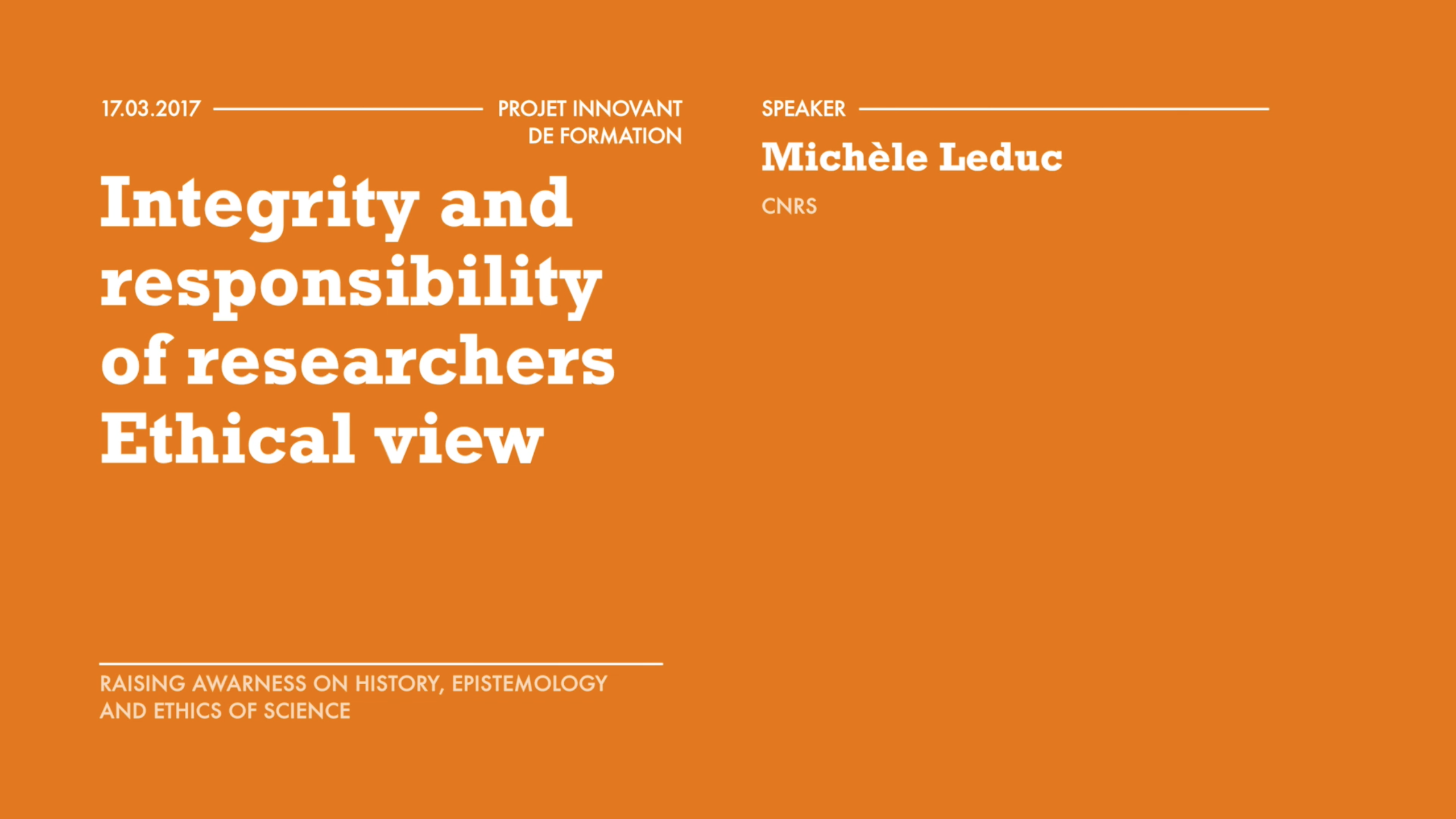
📥 Télécharger en HD
📄 Description de la vidéo pour YouTube
INTRODUCTION SCIENCE & SOCIETY (2) BY MICHEL MORANGE
📝 ABSTRACT
Who are scientists? This is the question Michel Morange asks in his introduction to Livio Riboli-Sasco’s lecture. To develop his hypothesis, he first explains what anthropology of science is, and then defines “citizen science”. The problem, he concludes, is the difficulty to distinguish between professional scientists and amateurs.
📖 SUMMARY
00:00:00 – 1. Introduction
00:00:03 – 2. Anthropology of science
00:03:03 – 2.1. Results
00:04:21 – 2.2. The “strategies” of scientists to develop their research
00:06:54 – 2.3. The limits of anthropology of science
00:08:35 – 3. “Citizen science”
00:08:48 – 3.1. The actors in the production of scientific facts
00:09:58 – 3.2. The 20th century: the end of amateur science
00:11:11 – 3.3. Is science less democratic than in the past?
#️⃣ Mots clés : paris sciences lettres, psl, ethics, phd, science, epistemology, Livio Riboli-Sasco, anthropology, society, citizen science,
📸 Miniature YouTube
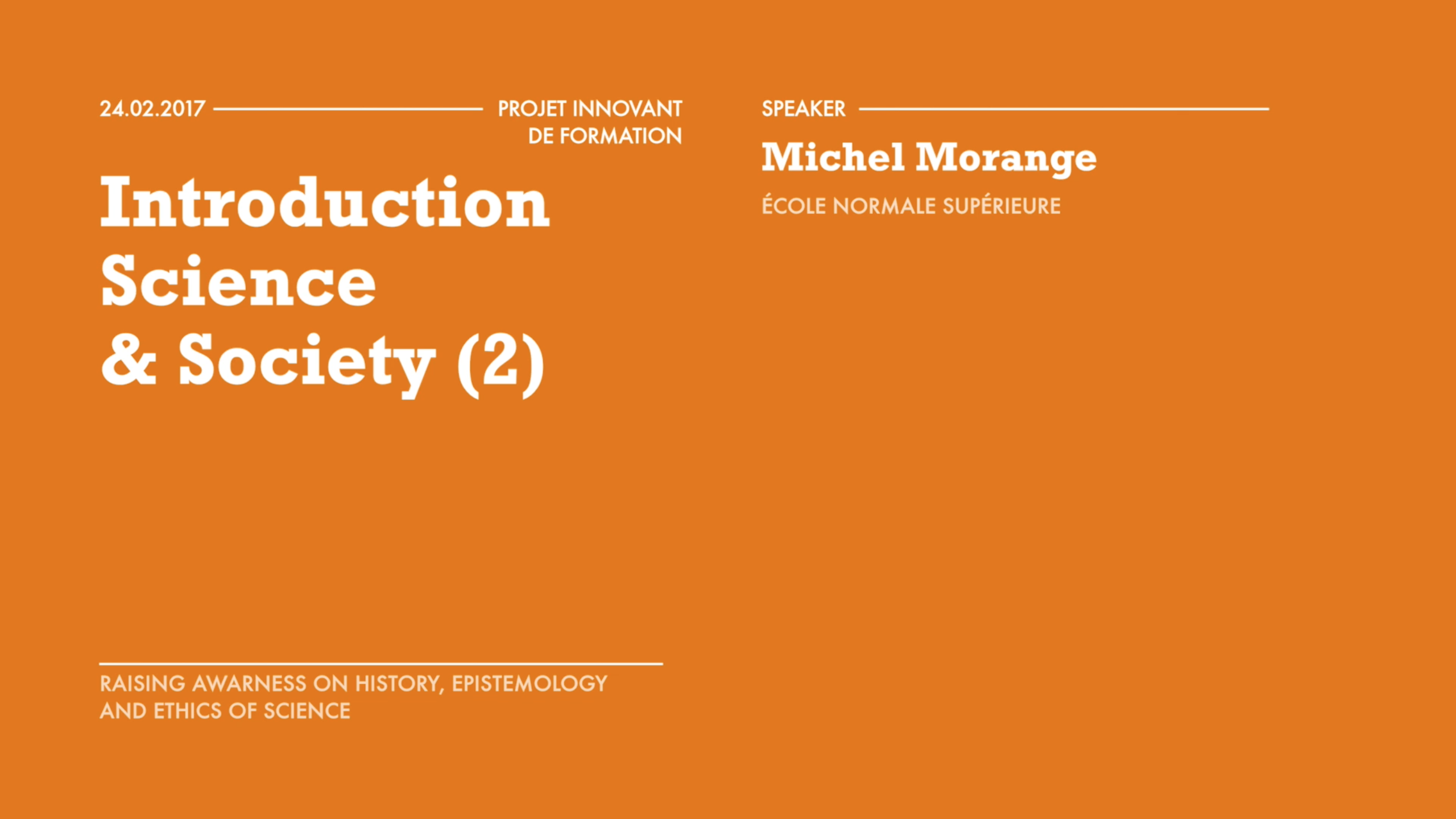
📥 Télécharger en HD
📄 Description de la vidéo pour YouTube
HOW RADICAL FORMS OF CITIZEN’S PARTICIPATION… BY LIVIO RIBOLI-SASCO
📝 ABSTRACT
How are we producing knowledge? What changes when scientists work with citizens? In his lecture, Livio Riboli-Sasco explains how citizens’ participation in science transforms the way scientists conduct research. He uses many examples of research projects in which citizens are closely involved to show that citizens are legitimate in raising scientific questions. They bring objectivity to science, he says, and help scientists deepen their understanding of natural and human mechanisms. Riboli-Sasco ends his talk by enumerating obstacles he has faced when working on projects with citizens: the lack of funding, the institutional pressure on researchers, and the difficulty to find mediators.
📖 SUMMARY
00:00:00 – 1. Introduction
00:01:25 – 1.1. What is citizen science?
00:04:52 – 2. Diving into contemporary citizen science
00:04:55 – 2.1. The project of Les nouveaux commanditaires by Bruno Latour
00:07:30 – 2.2. The project of Livio Riboli-Sasco with Bruno Latour
00:07:47 – 2.2.1. The difference between artists and scientists
00:08:50 – 2.2.2. Citizens are legitimate in raising scientific questions
00:10:45 – 2.2.3. How identity changes the way to approach scientific research
00:13:20 – 2.2.4. Citizen science brings objectivity
00:15:28 – 4. Examples of projects in citizen science
00:15:30 – 4.1. Project n°1: How colors influence our memory?
00:21:31 – 4.2. Project n°2: How to help sclerosis patients to live better?
00:26:21 – 4.3. Project n°3: How to interact better in a playground?
00:28:58 – 4.4. Project n°4: How to help people with speech disorder in Basque language?
00:35:10 – 4.5. Project n°5: How costal erosion will affect Portuguese favelas?
00:41:10 – 5. Obstacles to citizen science
00:41:10 – 5.1. The lack of funding
00:46:54 – 5.2. The institutional pressure
00:49:45 – 5.3. The difficulty to find mediators
#️⃣ Mots clés : paris sciences lettres, psl, ethics, phd, science, epistemology, Livio Riboli-Sasco, citizen, citizen's participation, nouveaux commanditaires,
📸 Miniature YouTube
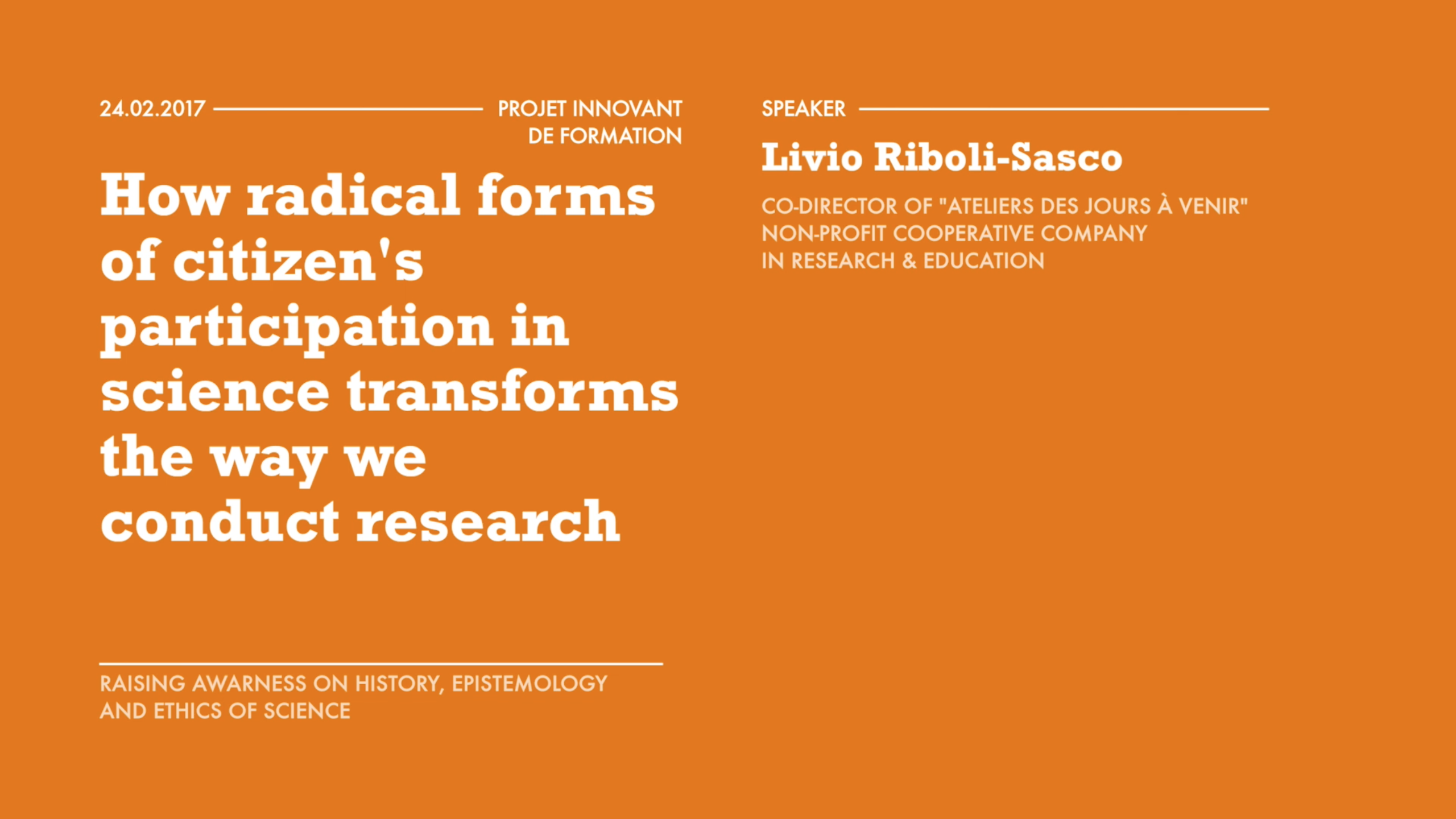
📥 Télécharger en HD
📄 Description de la vidéo pour YouTube
INTRODUCTION SCIENCE & SOCIETY BY MICHEL MORANGE
📝 ABSTRACT
Is science free? Does it have no limits? In his introduction to Mathias Girel’s lecture, Michel Morange talks about the role of scientists in their time. He then discusses the relationship between science and political power, as well as the dependence of science upon business. Morange ends his introduction by presenting Mathias Girel, professor of Philosophy at the École normale supérieure de Paris.
📖 SUMMARY
00:00:00 – 1.Introduction
00:00:52 – 2. Scientists and the culture of their time
00:03:54 – 3. Science and political power
00:03:55 – 3.1. Historical dependence between science and politics
00:06:47 – 3.2. Orientation of research by politicians
00:10:27 – 3.3. Risks for science
00:14:20 – 4. Science and business
00:14:23 – 4.1. The link between science and business
00:20:26 – 4.2. Companies may oppose the results of science
00:23:04 – 5. Presentation of Mathias Girel
#️⃣ Mots clés : paris sciences lettres, psl, ethics, phd, science, epistemology, mathias girel, society, business,, political power, risks
📸 Miniature YouTube
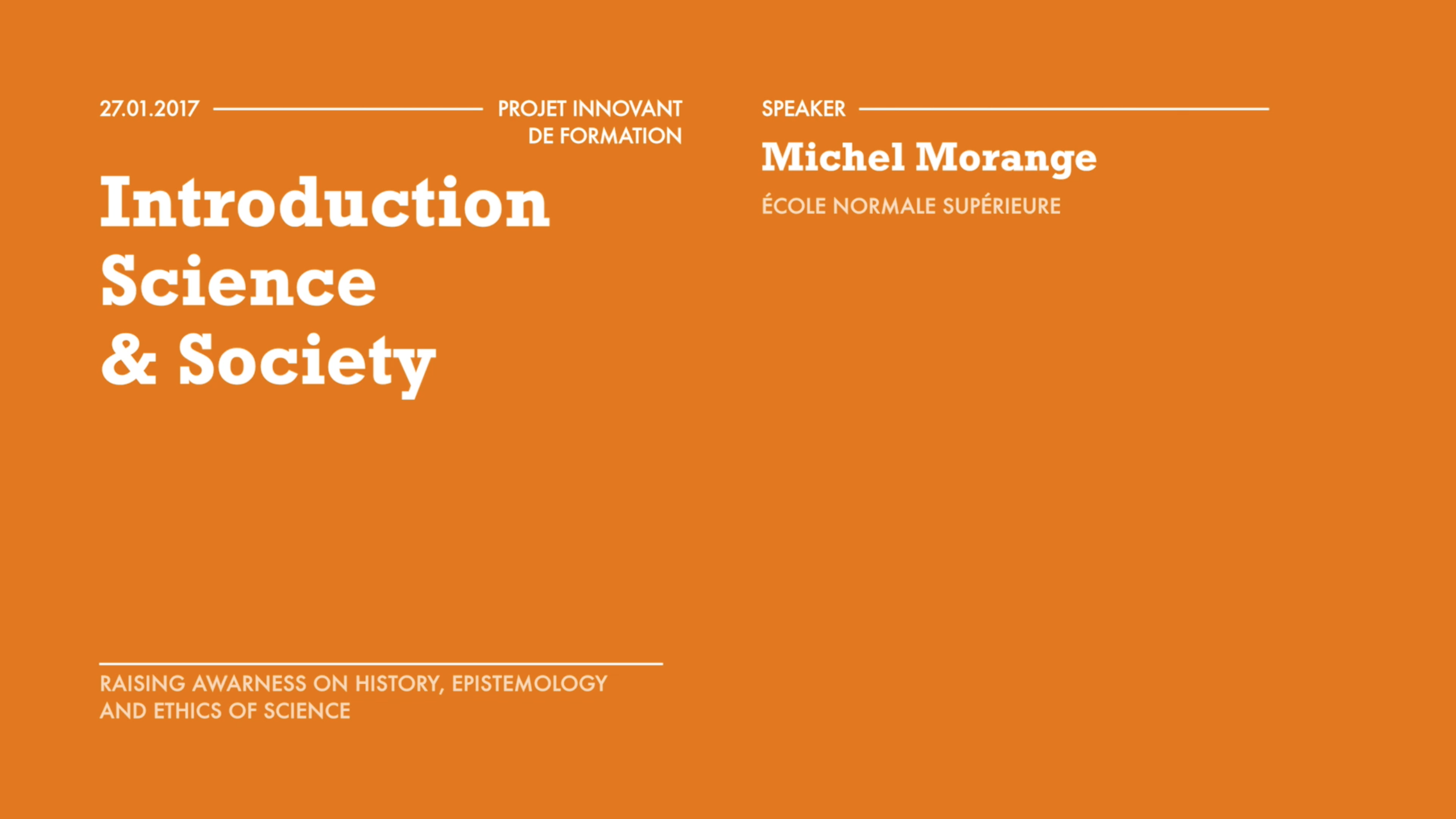
📥 Télécharger en HD
📄 Description de la vidéo pour YouTube
INSIGHTS ON DOUBT-PRODUCTION BY MATHIAS GIREL
📝 ABSTRACT
How to face doubt-mongers? Can we use what we know of antic skepticism to defeat them? In his lecture “Insights on doubt-production”, Mathias Girel introduces his topic with 4 examples of eye-opening books. He then describes the different techniques doubt-mongers use to weaken scientific findings, and he discloses their strategy to make people believe their arguments. However, Girel explains, understanding of Greek skepticism can help defeat doubt-mongers by debunking their flimsy arguments. He then warns the audience about the risks of always doubting scientific findings and finishes his lecture by giving some tips to help science endure.
📖 SUMMARY
00:00:00 – 1. Introduction
00:01:00 – 2. Examples of 4 eye-opening books
00:01:54 – 2.1. Agnotology by Robert N. Proctor and Londa Schiebinger
00:04:04 – 2.2. Merchants of doubts by Naomi Oreskes and Erik M. Conway
00:05:17 – 2.3. The case of secrecy by Peter Galison
00:06:16 – 2.4. ID is a legitimate science, S. Fuller, Kitzmiller vs Dover, 2005
00:09:32 – 3. Different ways to weaken the chain of inferences
00:09:40 – 3.1. Hiding premises
00:10:40 – 3.2. Casting doubts on the premises
00:11:13 – 3.3. Establishing controversies
00:20:37 – 3.4. Weakening links between inferences
00:20:45 – 3.5. Adding other causes to a consequence
00:30:02 – 4. The strategy of doubt-mongers to make their arguments acceptable
00:30:15 – 4.1. The so-called skeptics or philosophers of science
00:31:00 – 4.2. What they say
00:34:32 – 4.3. What they do
00:35:30 – 4.4. The rhetorical tools they use
00:35:41 – 5. Defeating doubt-mongers thanks to philosophy
00:36:19 – 5.1. Attacking certainty
00:42:11 – 5.2. Arguments of indiscernibility
00:49:48 – 5.3. The case for epistemological indiscernibles
00:52:30 – 5.4. What kind of indiscernibility?
00:57:44 – 5.5. Demarcation arguments
01:01:30 – 6. The risks we face by always doubting
01:01:32 – 6.1. Assessing intentions
01:04:25 – 6.2. Controversy and conspiracy
01:05:55 – 7. Conclusion
01:06:00 – 7.1. Tips for science to endure
#️⃣ Mots clés : paris sciences lettres, psl, ethics, phd, science, epistemology, mathias girel, doubt production, philosophy, conspiracy
📸 Miniature YouTube
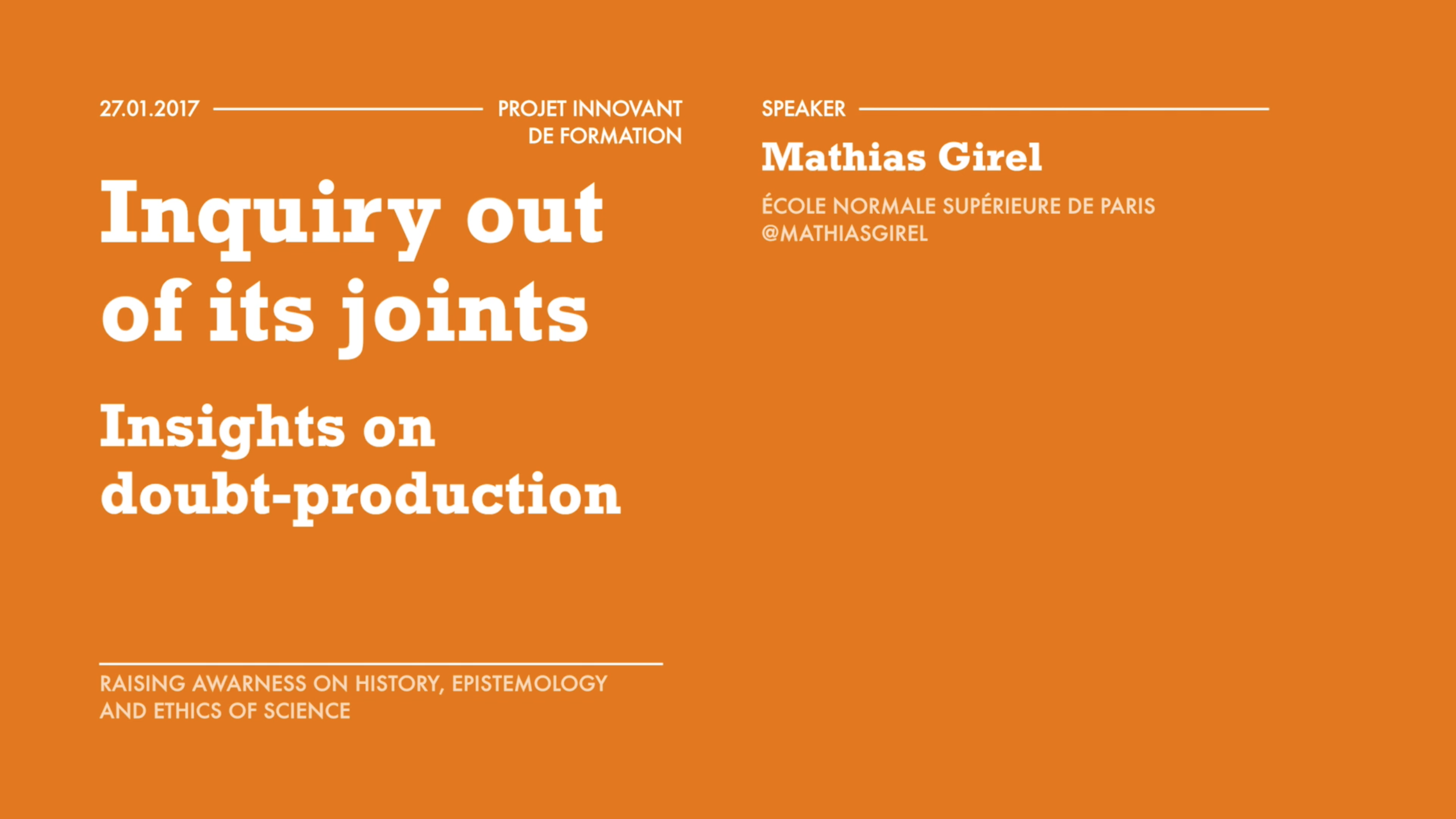
📥 Télécharger en HD
📄 Description de la vidéo pour YouTube
A BRIEF INTRODUCTION TO THE ACADEMIC PUBLISHING SYSTEM BY MICHEL MORANGE AND ANGELA TADDEI
📝 ABSTRACT
What are the flaws of the traditional system of publishing research papers? Can we find an alternative way to this traditional system? In his introduction to Brandon Stell’s lecture on PubPeer, a website for centralized post-publication peer review, Michel Morange recalls the fundamentals of the traditional system of publishing research articles in scientific journals. He then gives the floor to Angela Taddei, who speaks of alternative systems of publishing for researchers, and discusses the example of BioRxiv, a preprint server for biology.
📖 SUMMARY
00:00:10 – 1. Introduction by Michel Morange
00:00:30 – 1.1. The origin of scientific publications
00:02:30 – 1.2. The peer review system
00:03:30 – 1.3. Issues of the system
00:03:40 – 1.3.1. Journals
00:04:48 – 1.3.2. Reviewers
00:06:04 – 1.3.3. Authors
00:07:13 – 2. Introduction by Angela Taddei
00:07:13 – 2.1. The publication process is slow and unpredictable
00:08:23 – 2.2. Publications are essential for career development
00:09:19 – 2.3. BioRxiv, the preprint server for biology
00:12:30 – 2.4. Advantages to science
#️⃣ Mots clés : paris sciences lettres, psl, ethics, phd, science, epistemology, science, louis pasteur, karl popper, thomas kuhn, history of science,
📸 Miniature YouTube
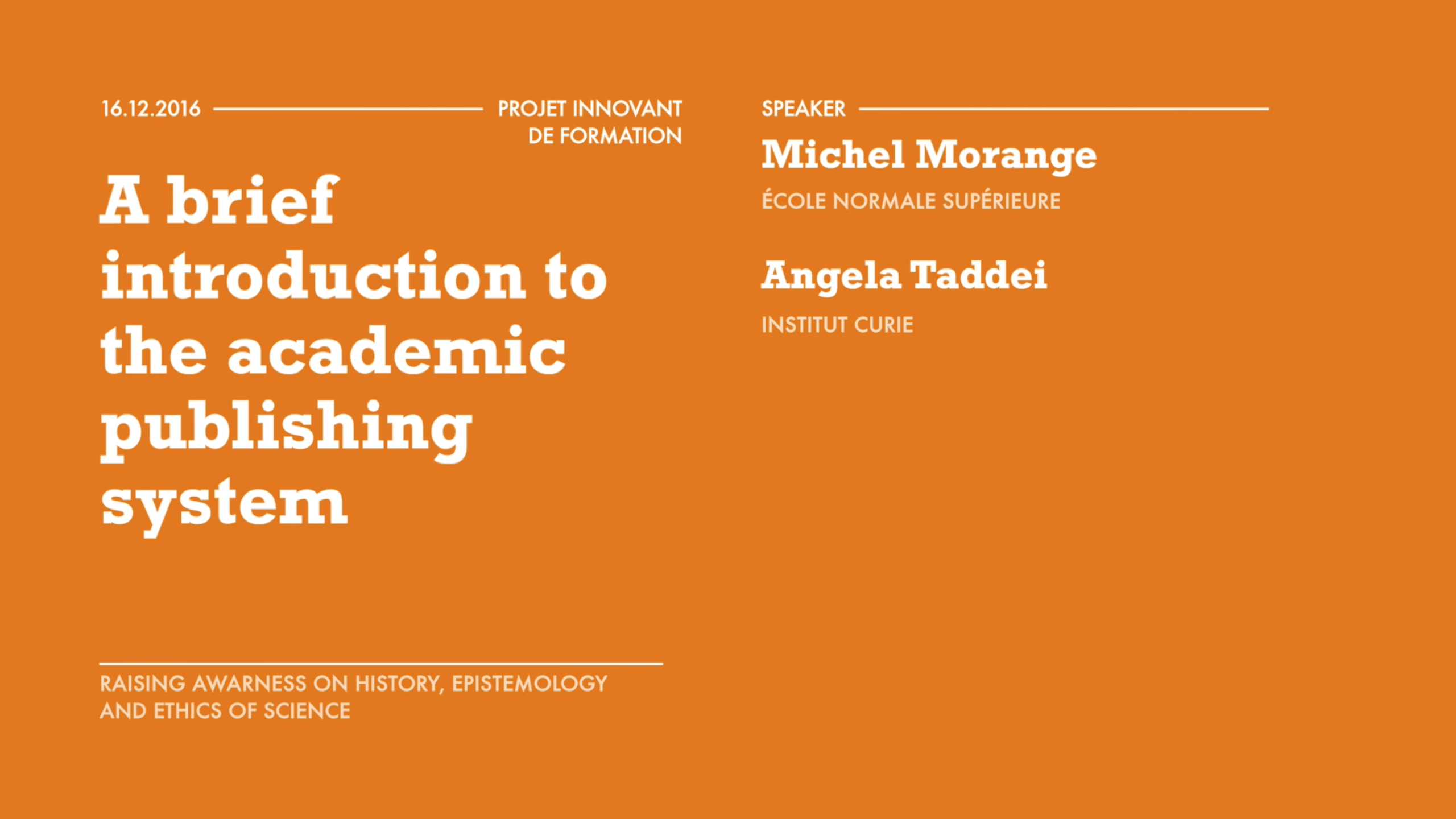
📥 Télécharger en HD
📄 Description de la vidéo pour YouTube
INTRODUCING PUBPEER BY BRANDON STELL
📝 ABSTRACT
Can we reduce the flaws in research thanks to a new kind of assessments on papers by the scientific community? In his lecture, Brandon Stell presents PubPeer, the website for centralized post-publication peer review he created in 2012. Inspired by journal club conversations, PubPeer enables scientists to discuss any publication in any field. This platform, Stell says, consequently reduces flaws in research by allowing open discussions and cross-examinations of the material. He then explains how the platform works: how to create an account, how to post comments about an article and how to answer them. He concludes his lecture by announcing the future developments for the platform in order to improve its efficiency.
📖 SUMMARY
00:00:10 – 1. Introduction
00:00:35 – 1.1. What is PubPeer?
00:01:05 – 1.2. PubPeer, inspired by journal clubs to disseminate information
00:02:00 – 2. The benefits of conversations on scientific articles
00:03:00 – 2.1. PubPeer helps determine the quality of publications
00:04:00 – 2.2. PubPeer helps reducing flaws in research
00:05:28 – 2.3. Example of a public policy based on a flawed research: the Poldermans case
00:06:54 – 2.4. Examples of surveys about flaws in scientific publications
00:11:13 – 3. How does PubPeer work?
00:12:10 – 3.1. How to enter PubPeer?
00:13:00 – 3.2. How to comment a publication and how to answer the comment?
00:14:55 – 3.2.1. The principle of anonymity
00:15:18 – 3.2.2. Unregistered submissions: the role of the moderators
00:17:04 – 3.2.3. Registered submissions: the peer number
00:23:25 – 3.3. PubPeer helps pointing out the problems in publications
00:24:38 – 3.3.1. Example of the discovery of a fabricated paper
00:26:00 – 3.4. Browser add-ons
00:27:18 – 4. Statistics about PubPeer
00:27:28 – 4.1. Number of comments per month
00:27:28 – 4.2. Number of times the site is viewed per month
00:33:03 – 5. Future goals of PubPeer
00:33:10 – 5.1. A worldwide journal club
00:33:34 – 5.2. Disseminating information
00:33:46 – 5.3. Encouraging the use of preprint
00:34:05 – 5.4. The PubPeer nonprofit foundation
00:34:37 – 5.5. Helping the discovery of science
00:34:37 – 5.6. Examples of other post-publication peer review websites
#️⃣ Mots clés : paris sciences lettres, psl, ethics, phd, science, epistemology, scientific publications, pubpeer, brandon stell, peer review,
📸 Miniature YouTube
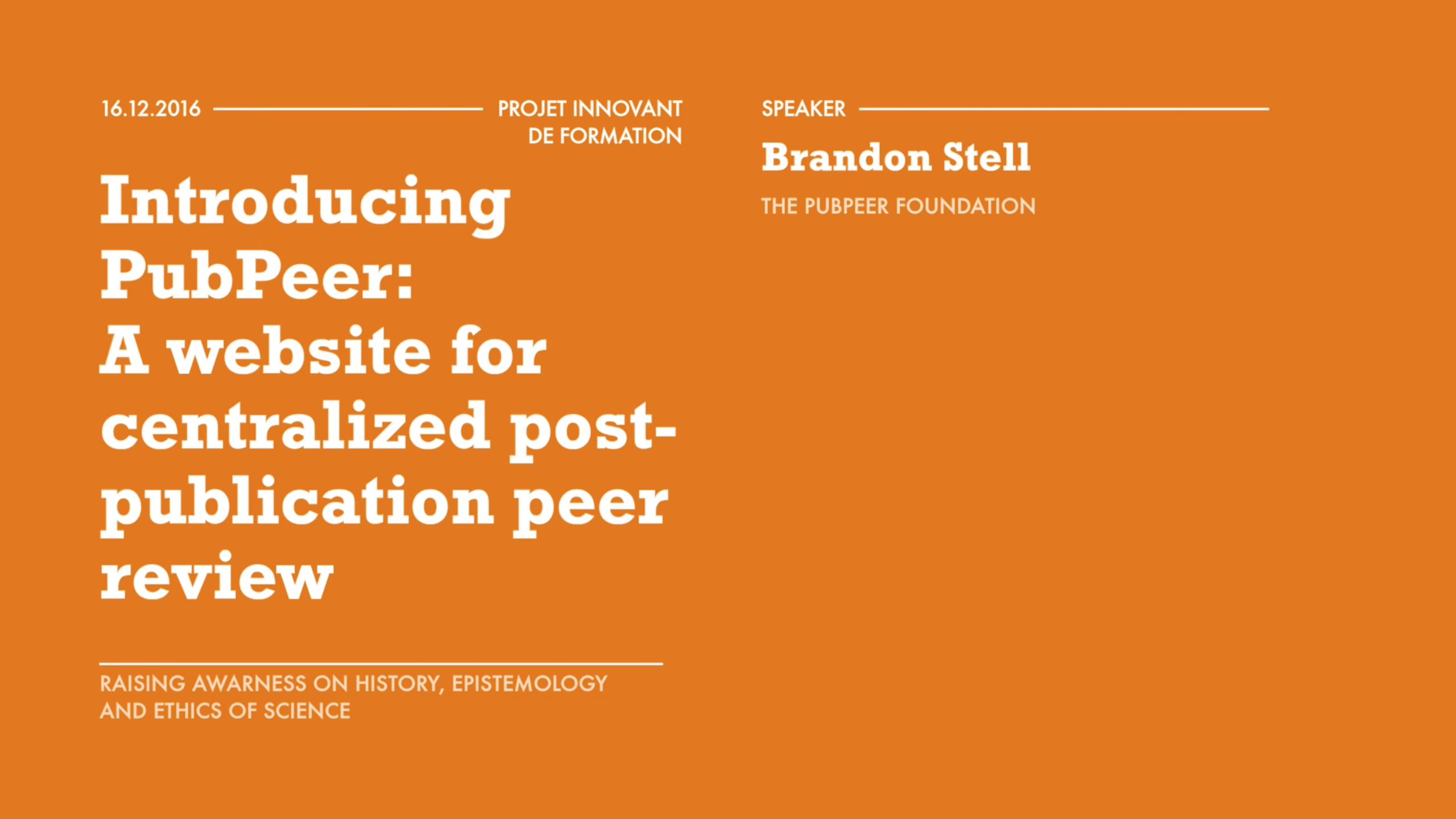
📥 Télécharger en HD
📄 Description de la vidéo pour YouTube
CONSTRUCTION AND TRUTH-VALUE OF SCIENTIFIC KNOWLEDGE BY MICHEL MORANGE
📝 ABSTRACT
What is common knowledge? How different is it from scientific knowledge? In the first part of his lecture, Michel Morange questions the notion of knowledge and distinguishes it from belief. He also points out a philosophical ideology about the relative value of knowledge and discusses its ability to help scientists reach reality. He then explains in which ways scientific knowledge is different from common knowledge and uses the examples of the Greek philosophers, Louis Pasteur and Karl Popper to support his claim. Scientific knowledge, he says, is a search for natural explanations; it results from a long historical process. Morange ends his lecture by asking a question to the audience: is intelligent design a scientific theory?
📖 SUMMARY
00:00:10 – 1. Introduction
00:01:18 – 2. What is knowledge?
00:01:19 – 2.1.Attempts of an answer
00:01:20 – 2.1.1. Answers by the audience
00:09:05 – 2.1.2. Answers by Michel Morange
00:10:09 – 2.2. The relative value of knowledge
00:35:05 – 3. What is scientific knowledge?
00:36:42 – 3.1. Definition by Michel Morange
00:37:00 – 3.1.1. A search for natural explanations
00:38:41 – 3.1.2. A result of a long historical process
00:47:42 – 3.2. The case of the science of History
00:50:40 – 3.3. A modern scientific method: the hypothetico-deductive method
00:52:52 – 3.3.1. The experiments on spontaneous generation
00:55:45 – 3.3.2. The experiments of Louis Pasteur
01:04:02 – 3.4. The scientific model of Karl Popper
01:28:06 – 3.5. Thomas Kuhn, and scientific paradigms
01:40:10 – 4. Conclusion
01:40:38 – 4.1. Is intelligent design a scientific theory?
#️⃣ Mots clés : paris sciences lettres, psl, ethics, phd, science, epistemology, science, louis pasteur, karl popper, thomas kuhn, history of science,
📸 Miniature YouTube
